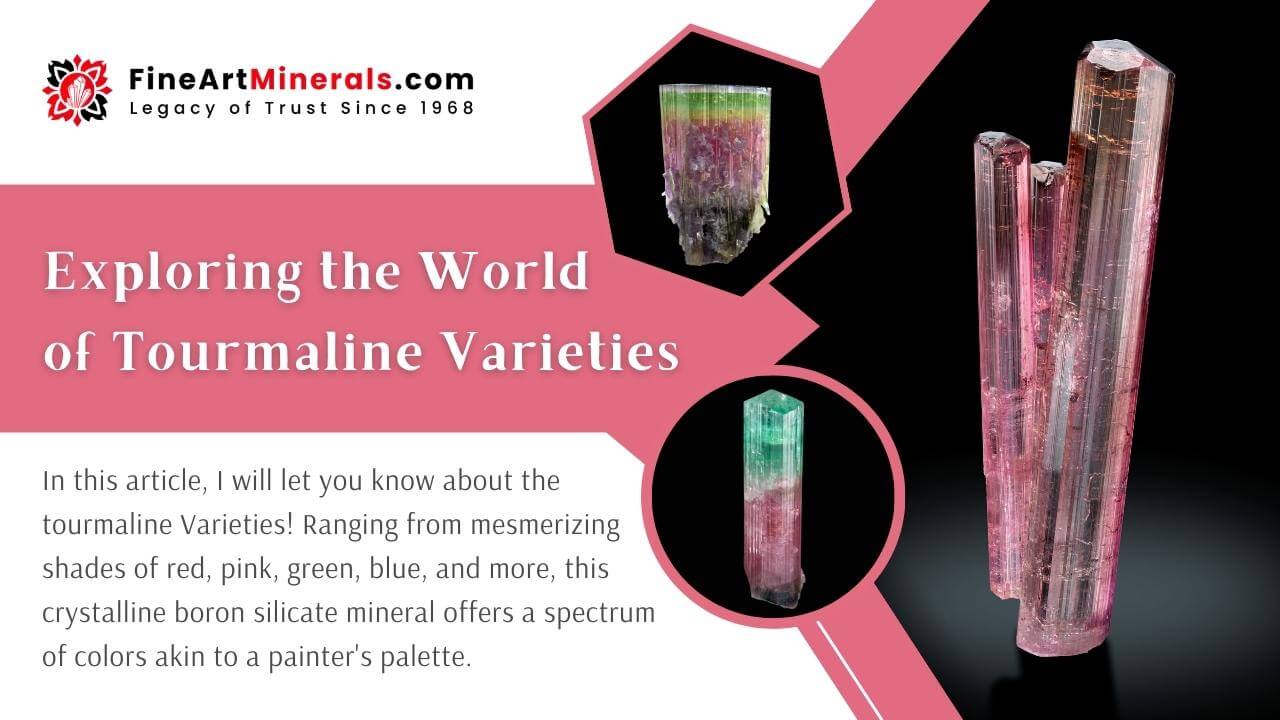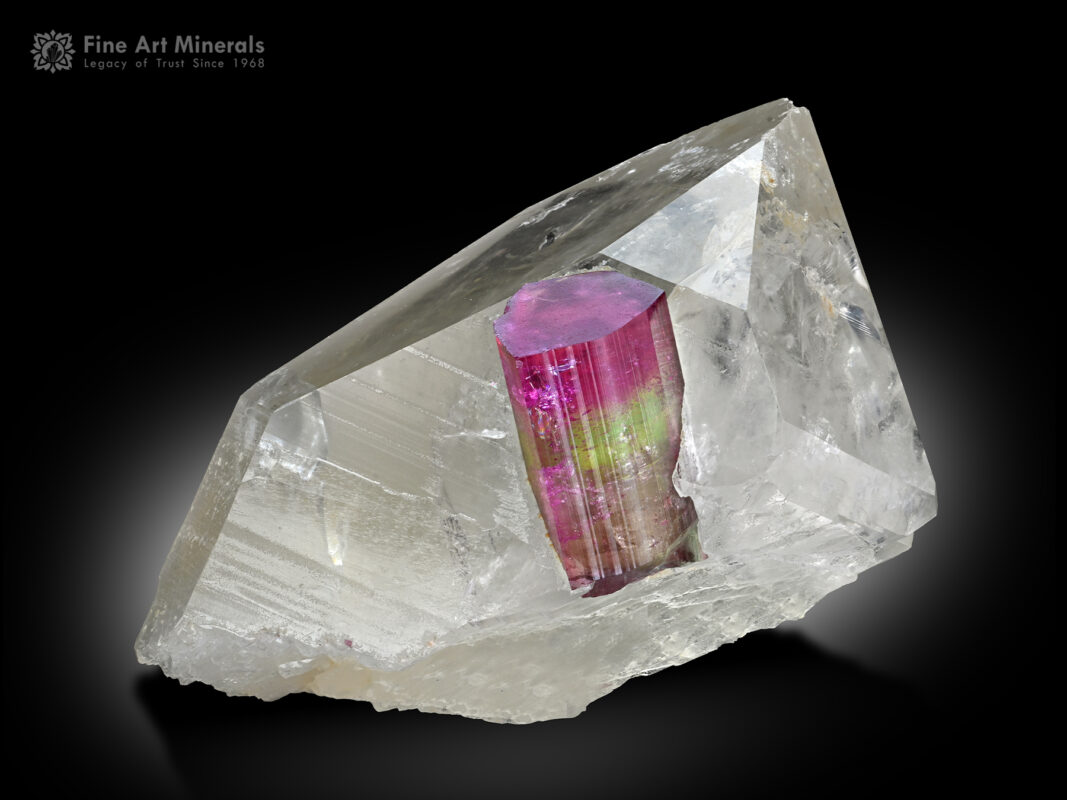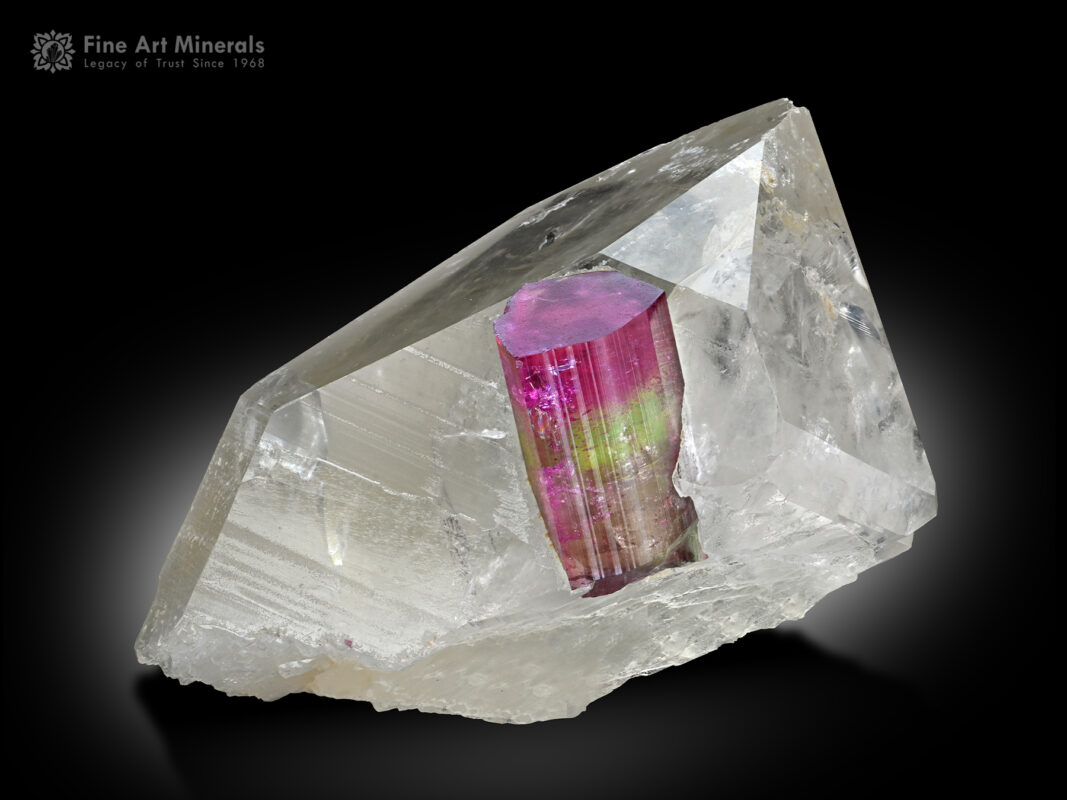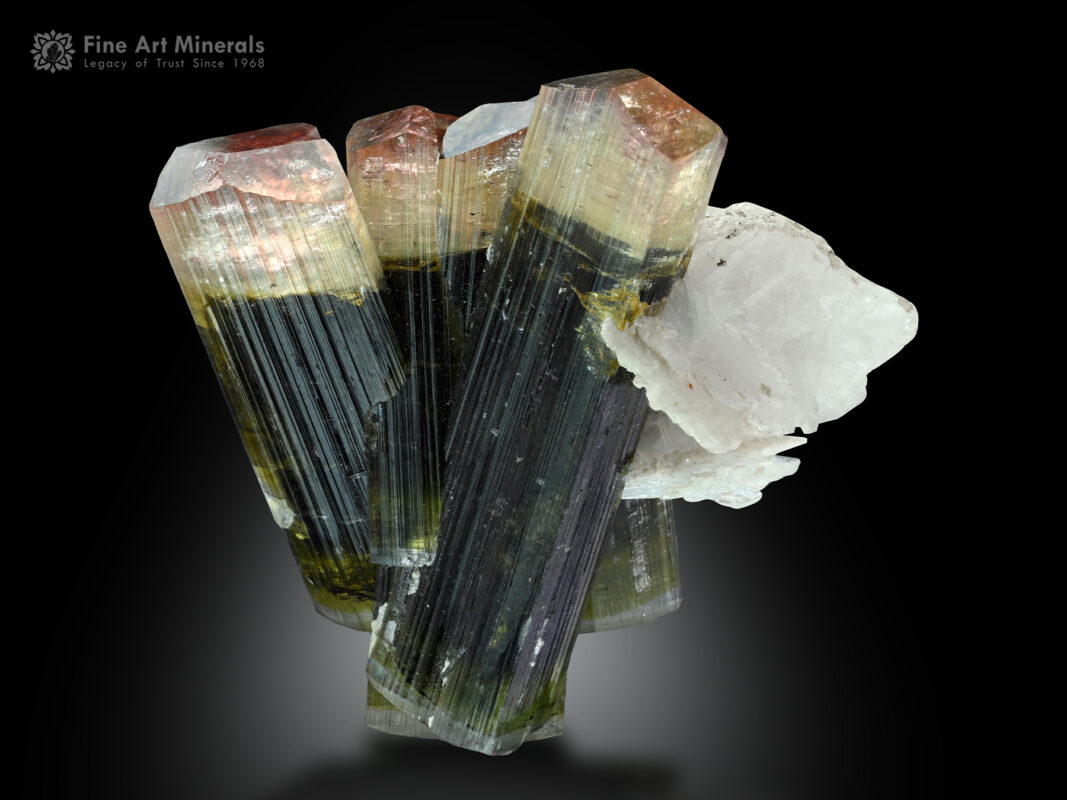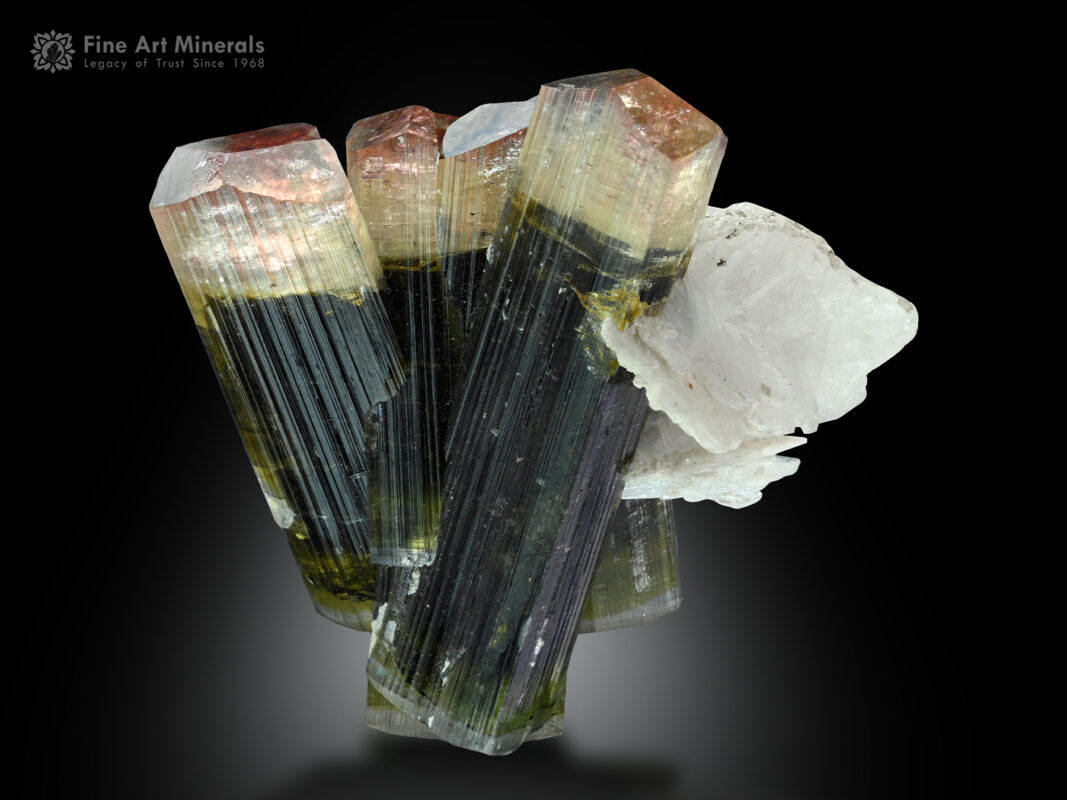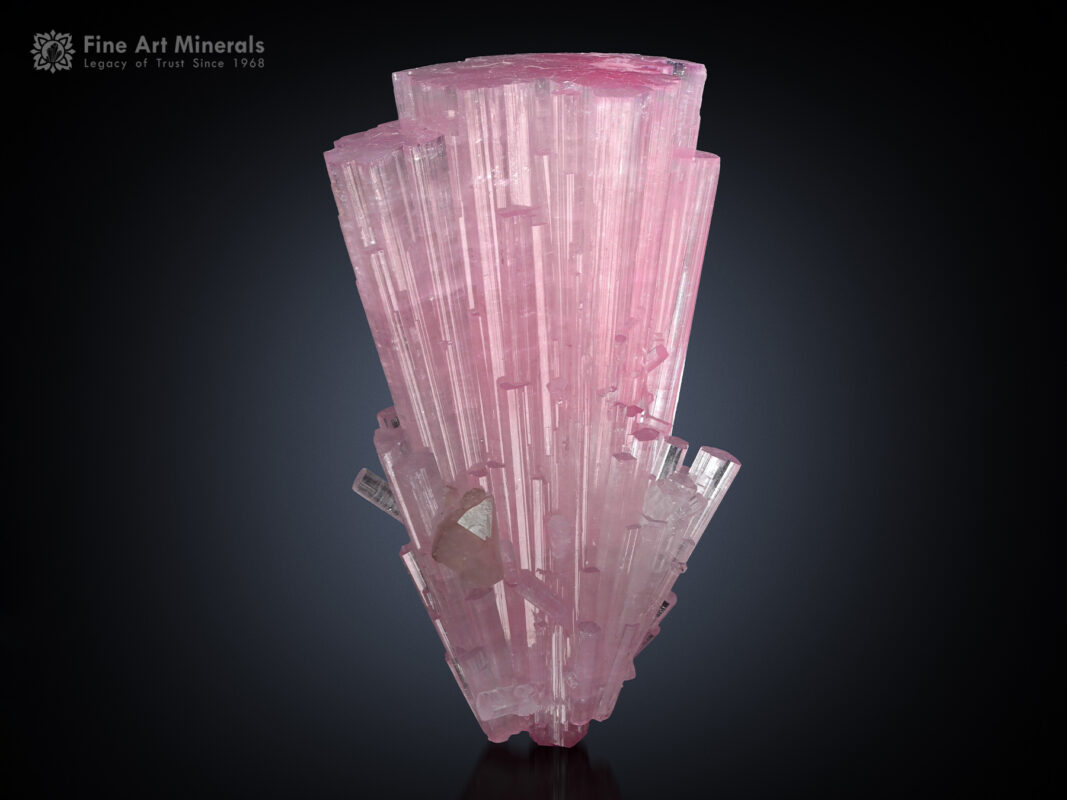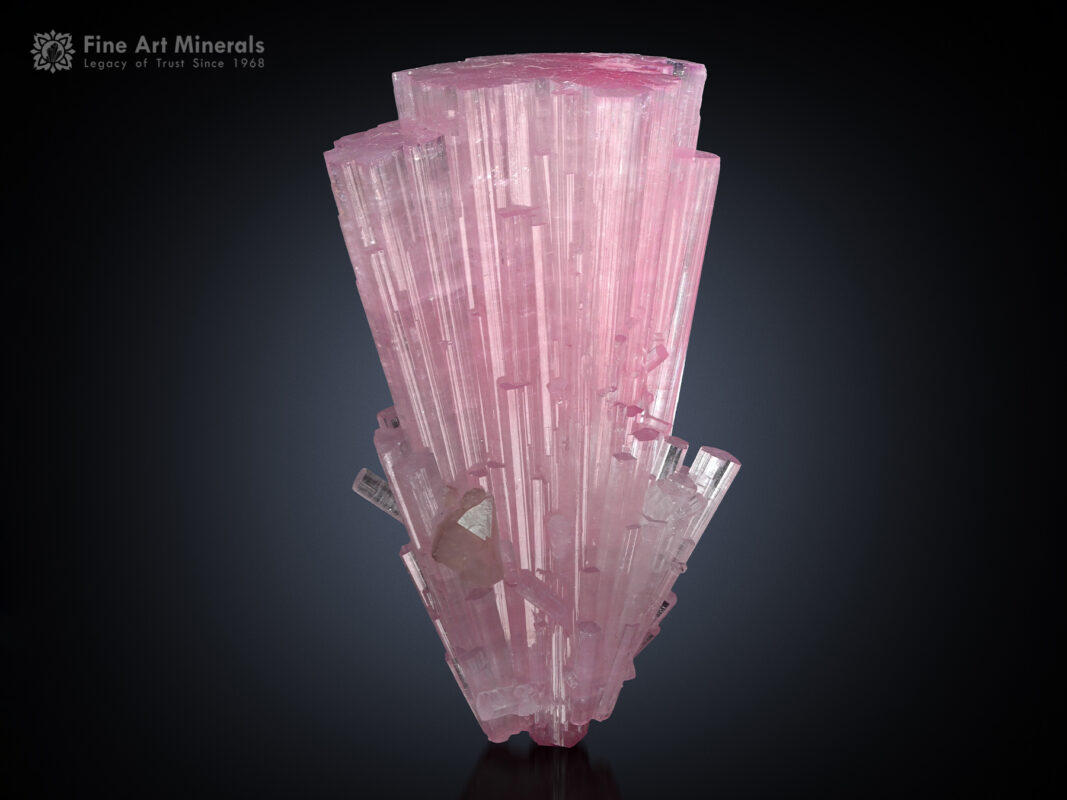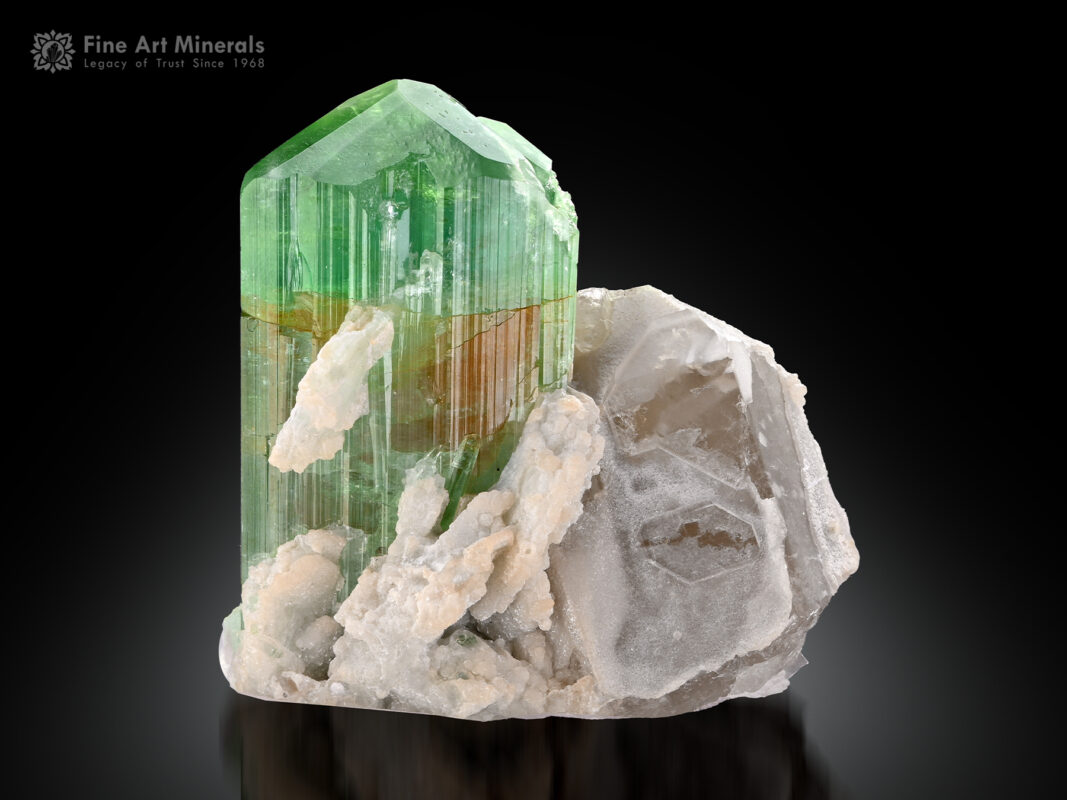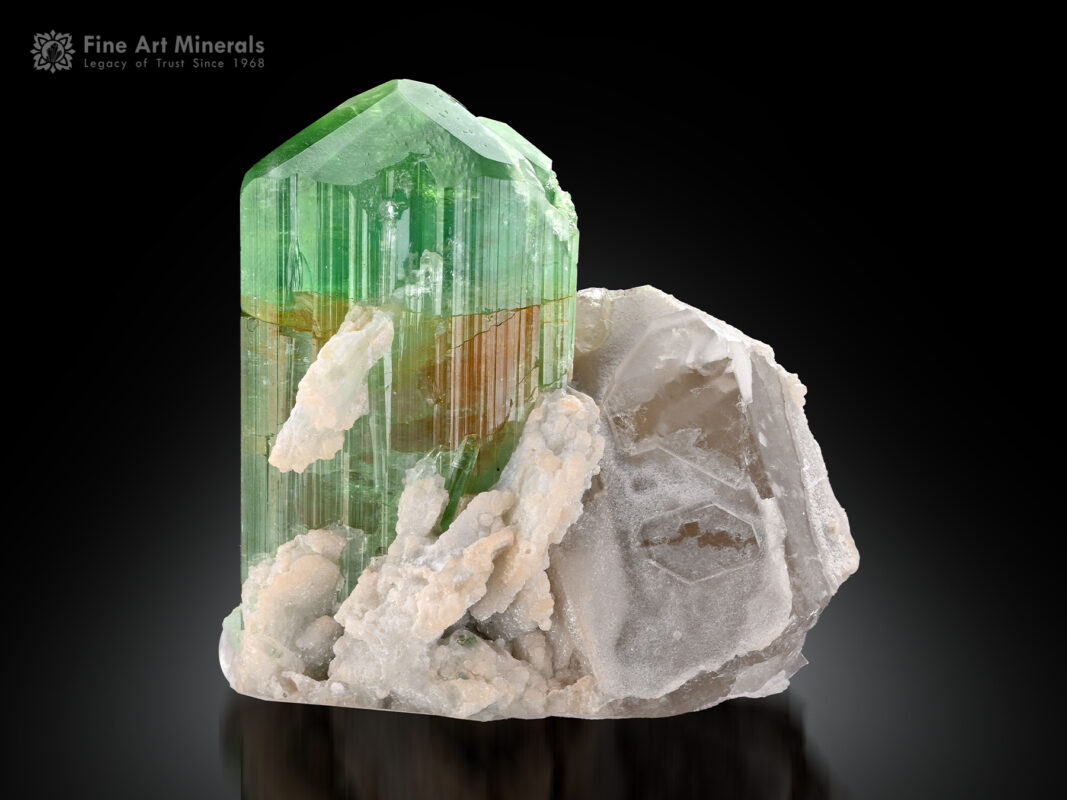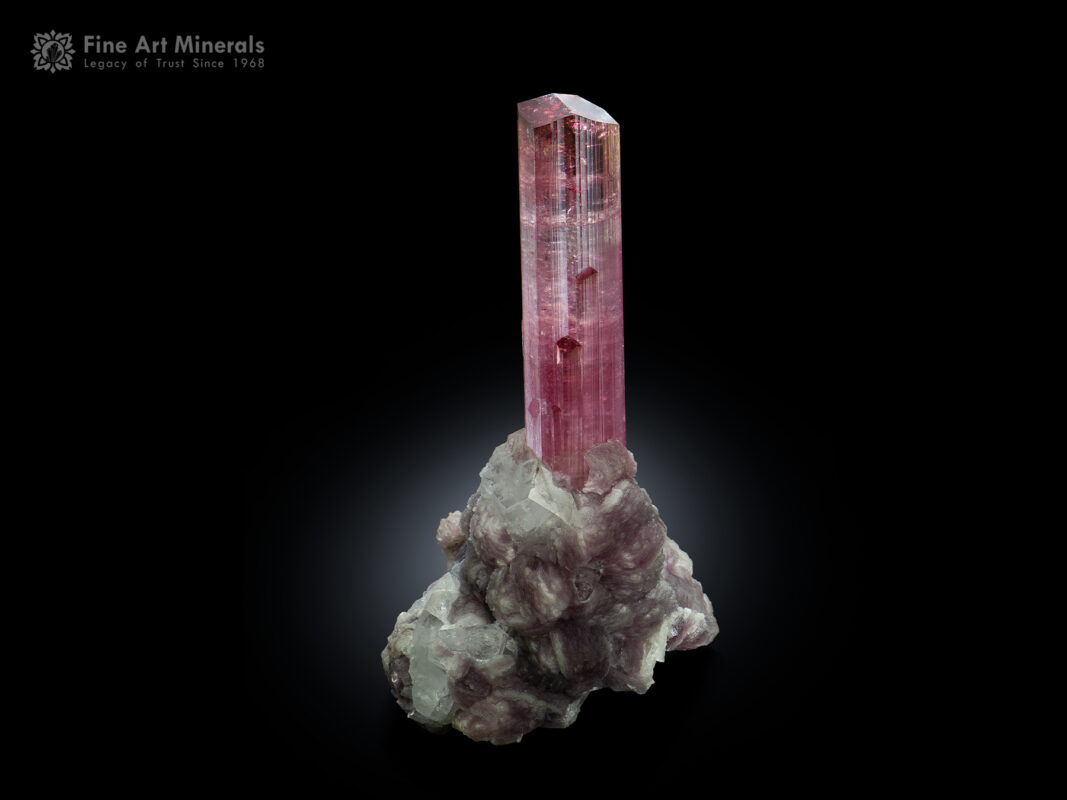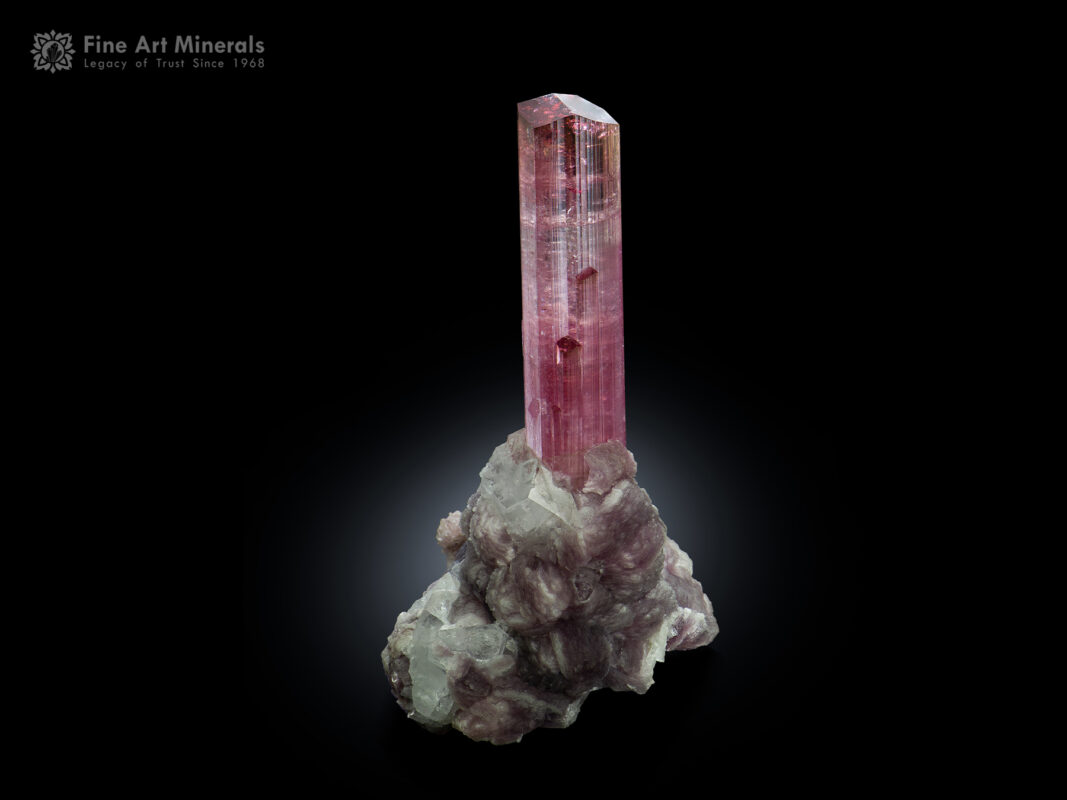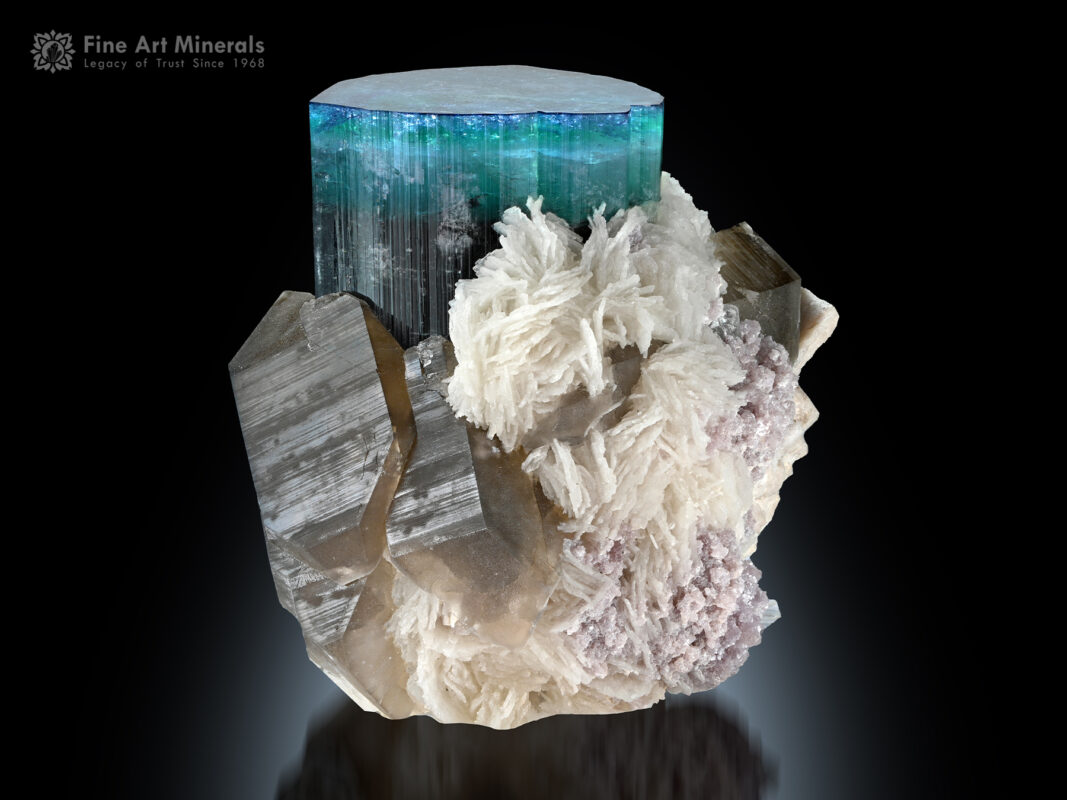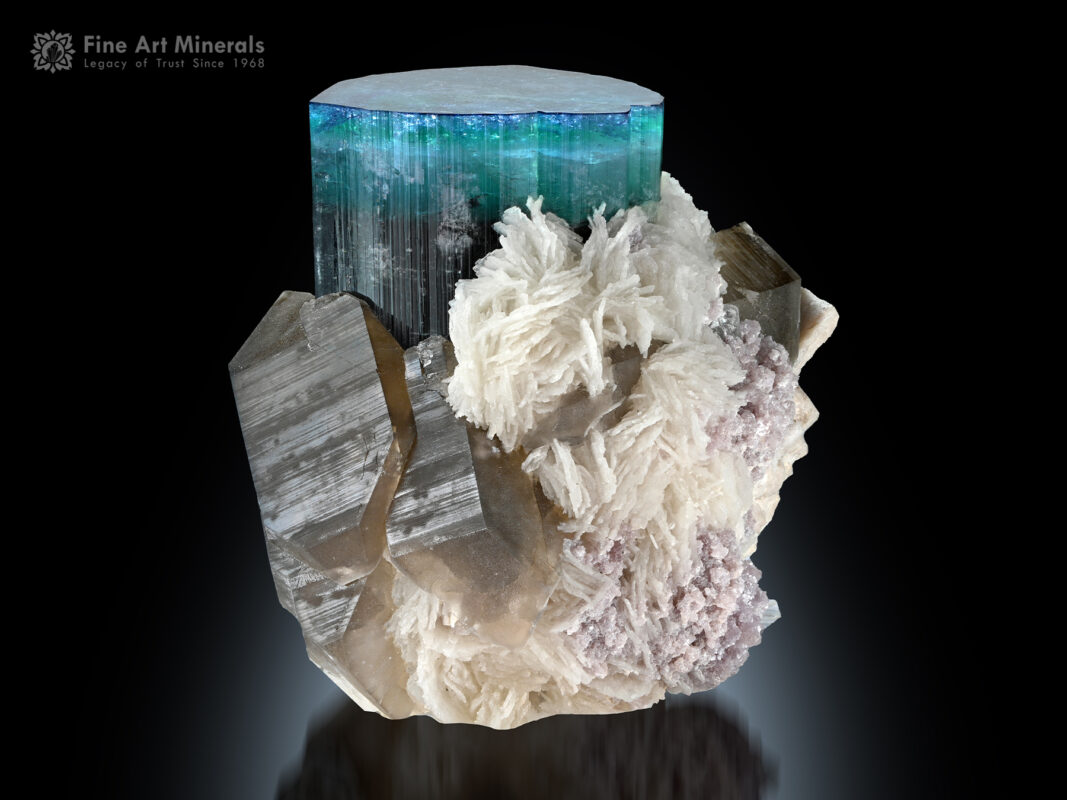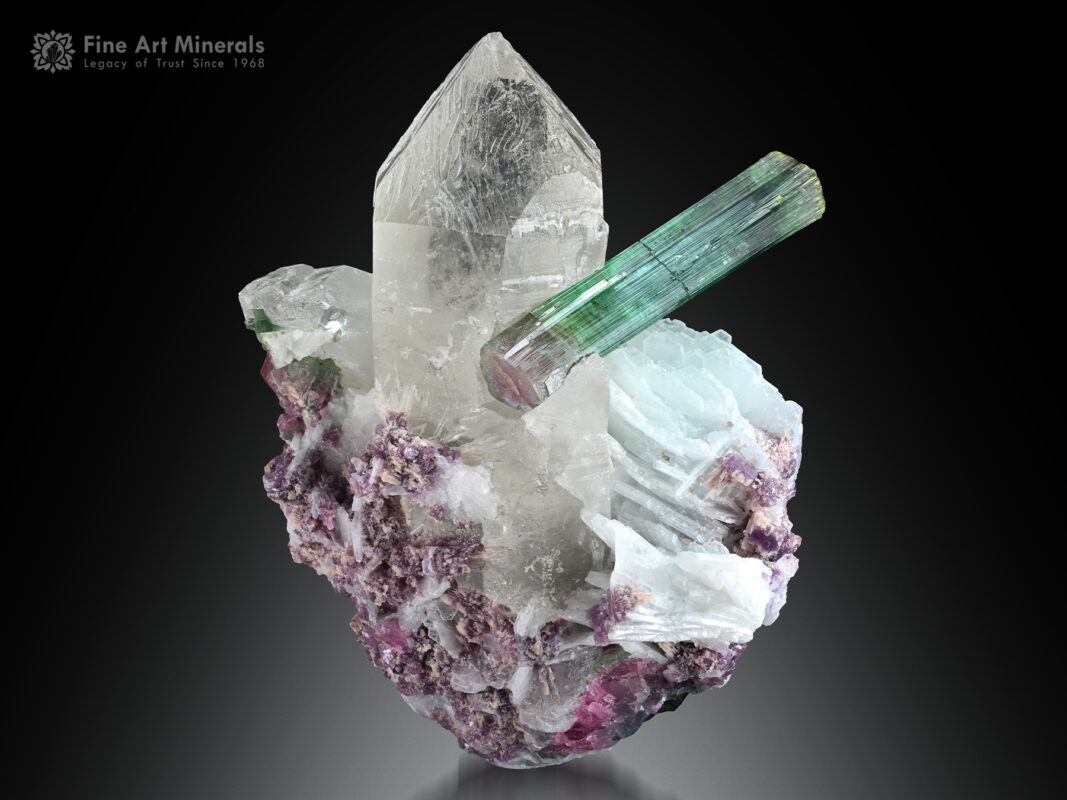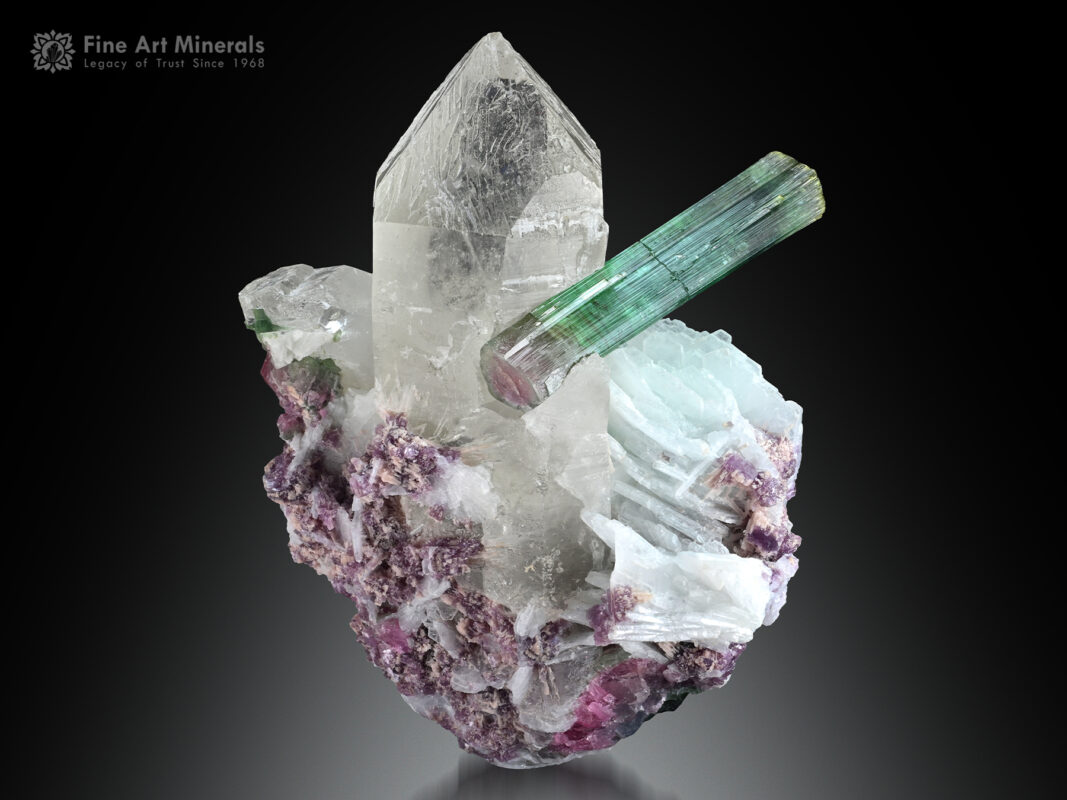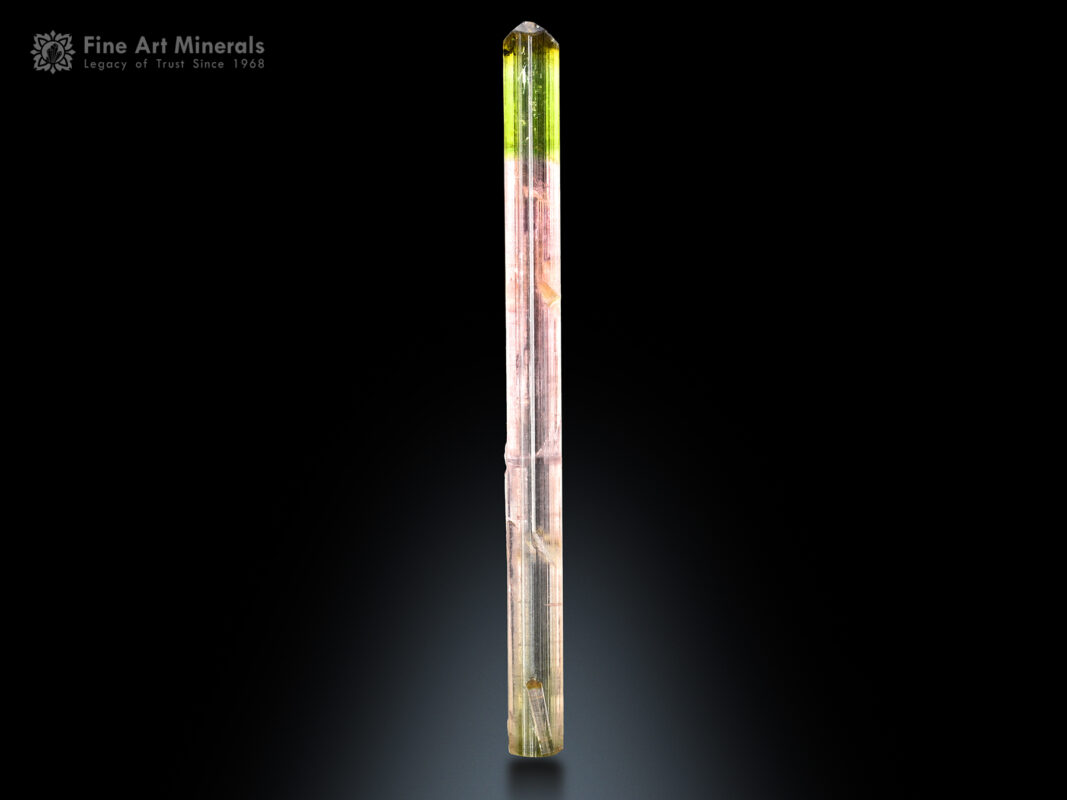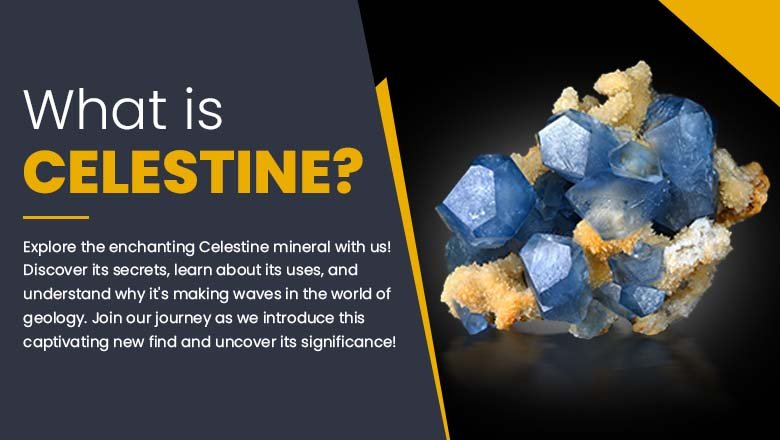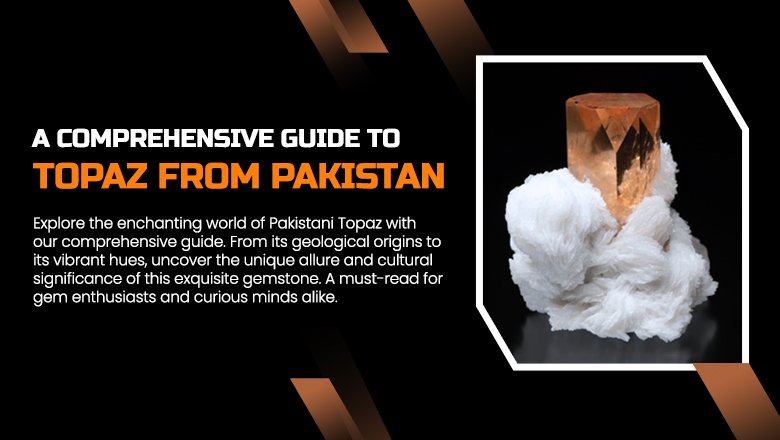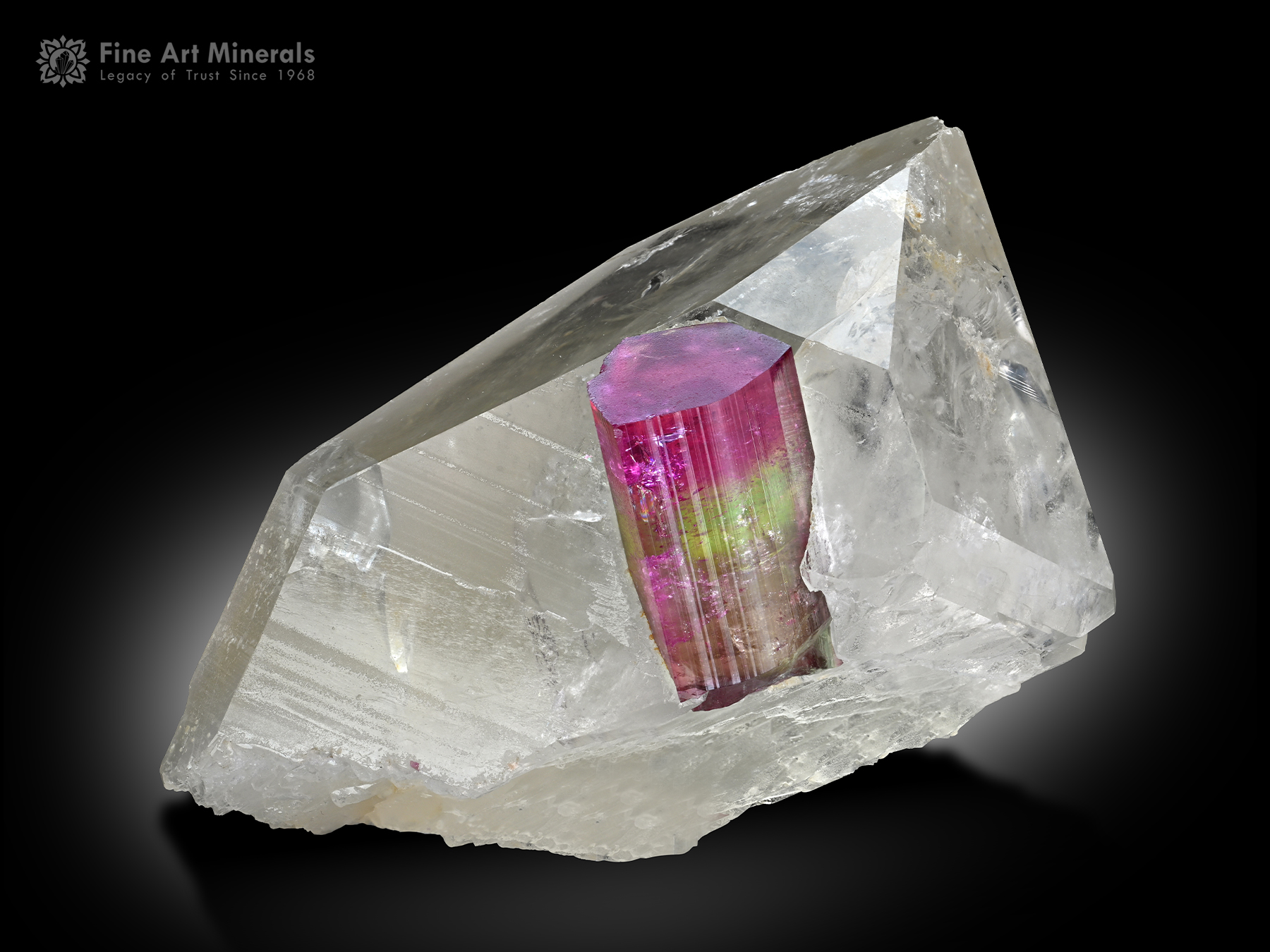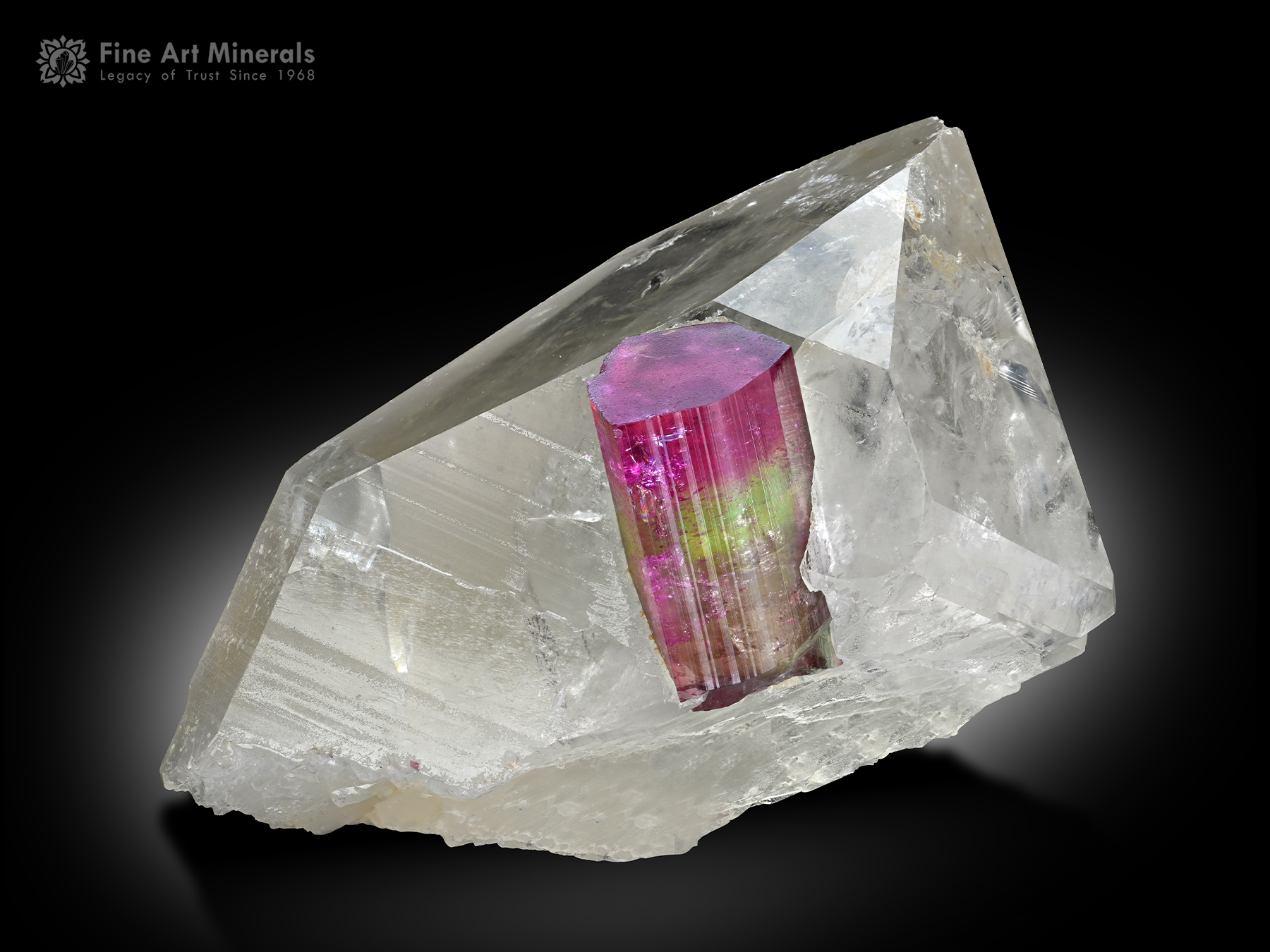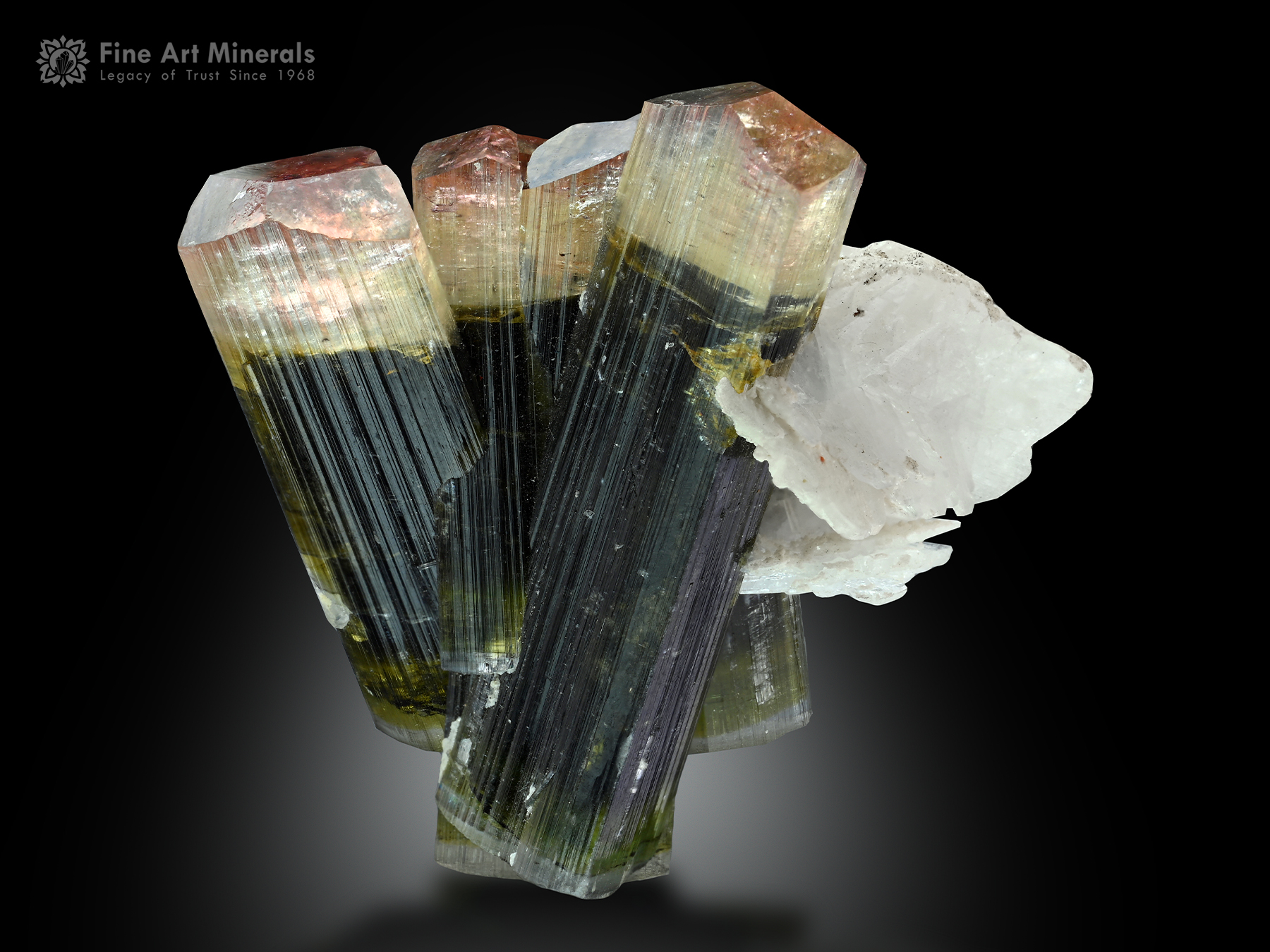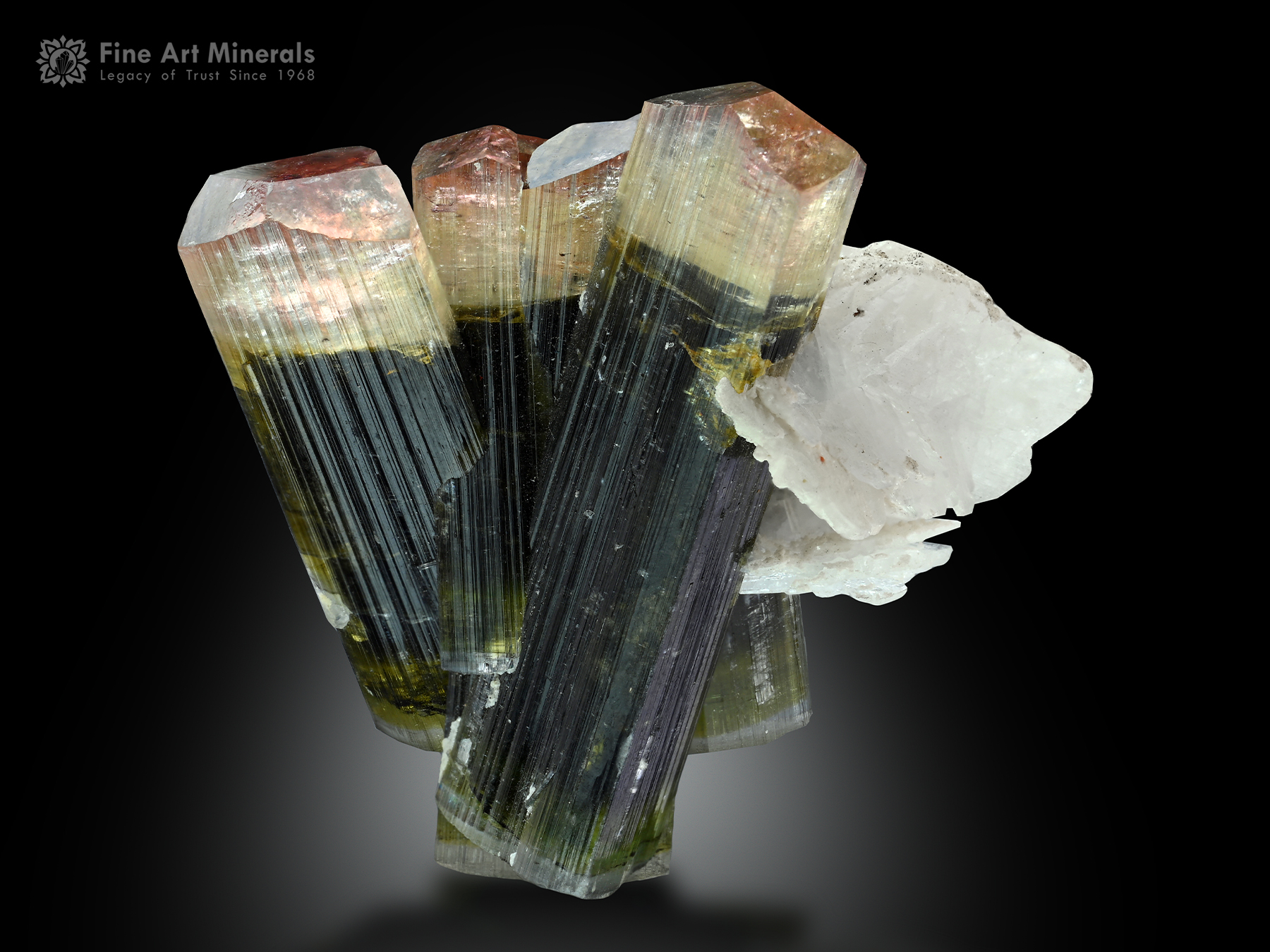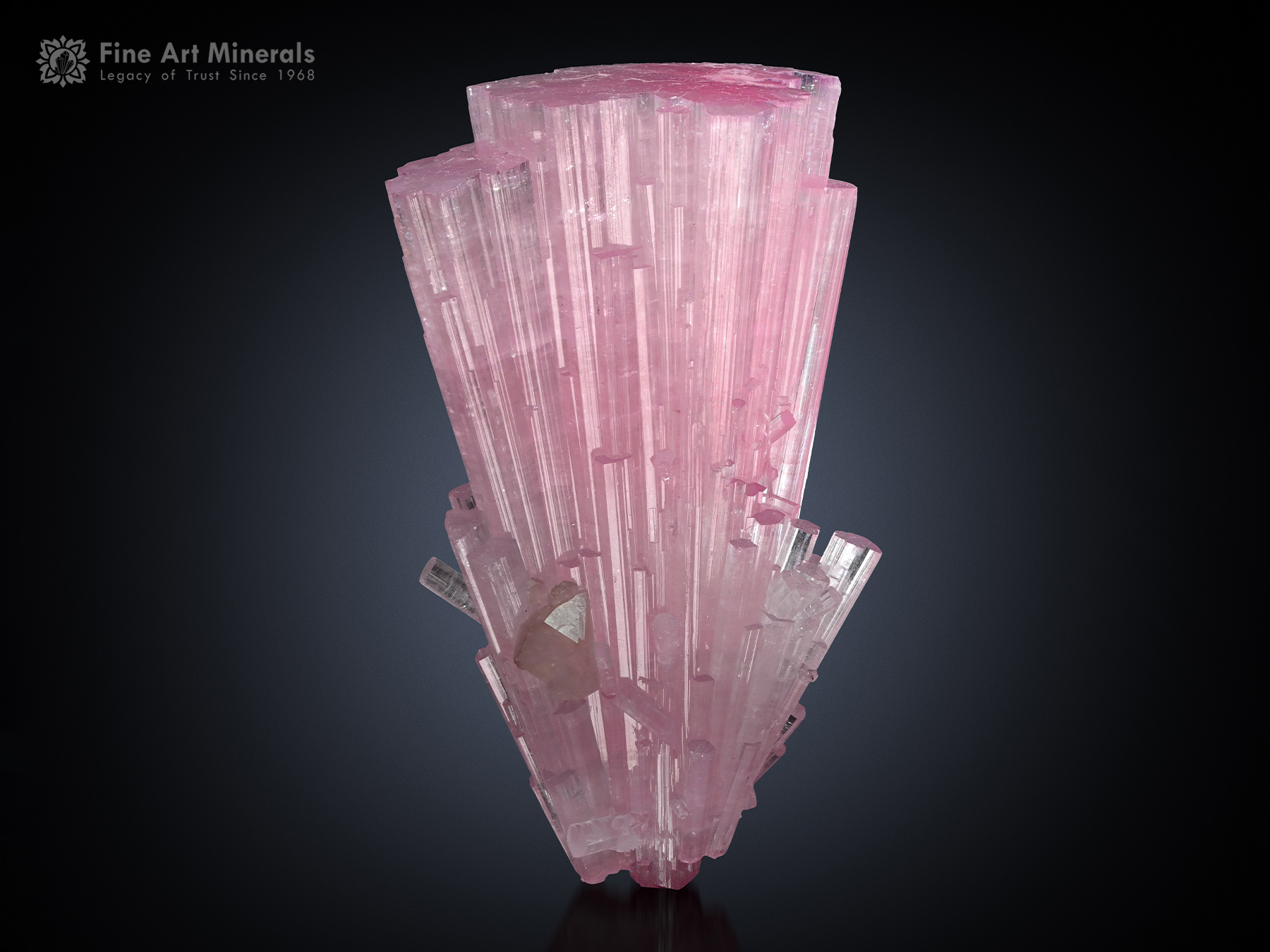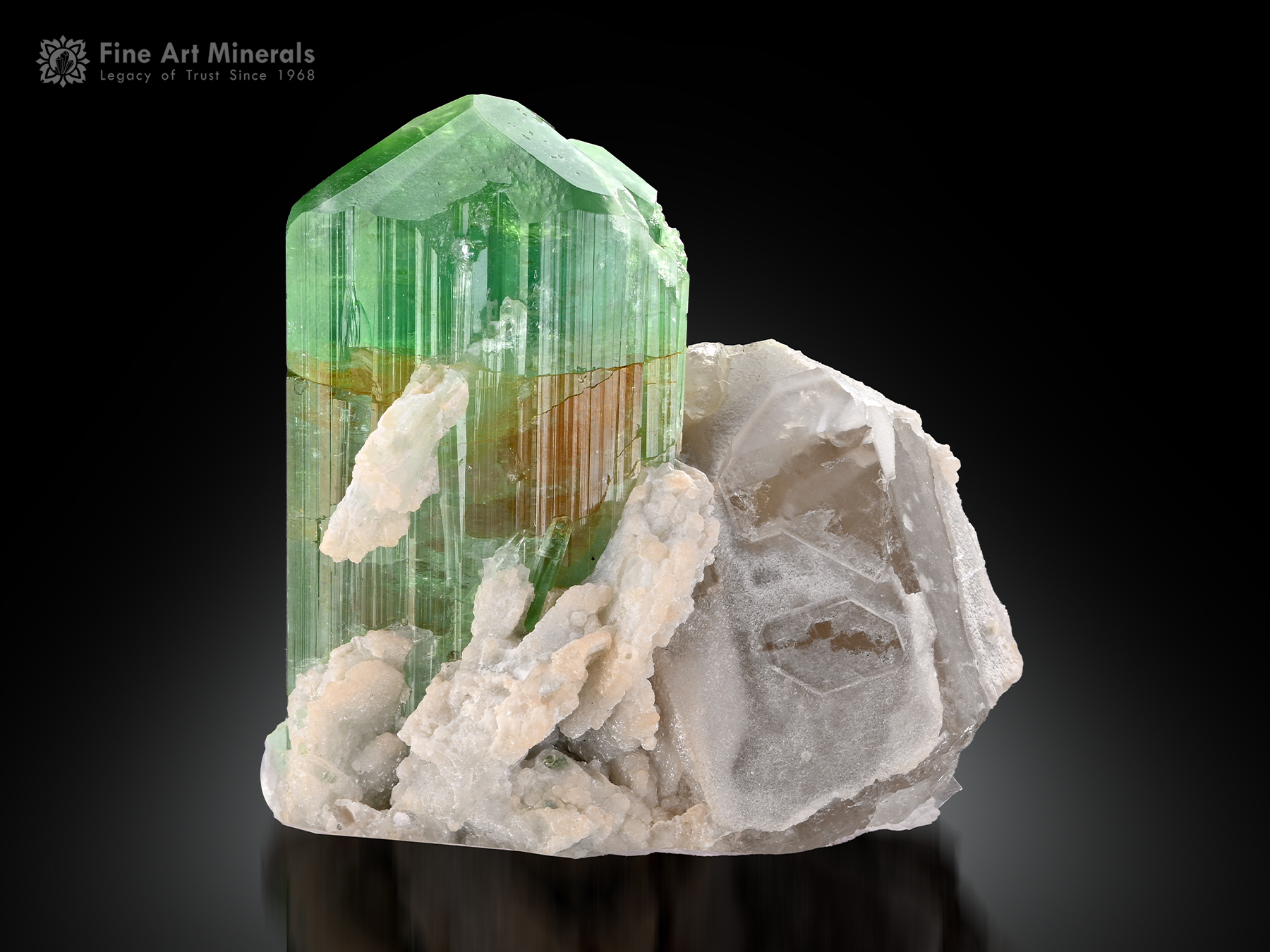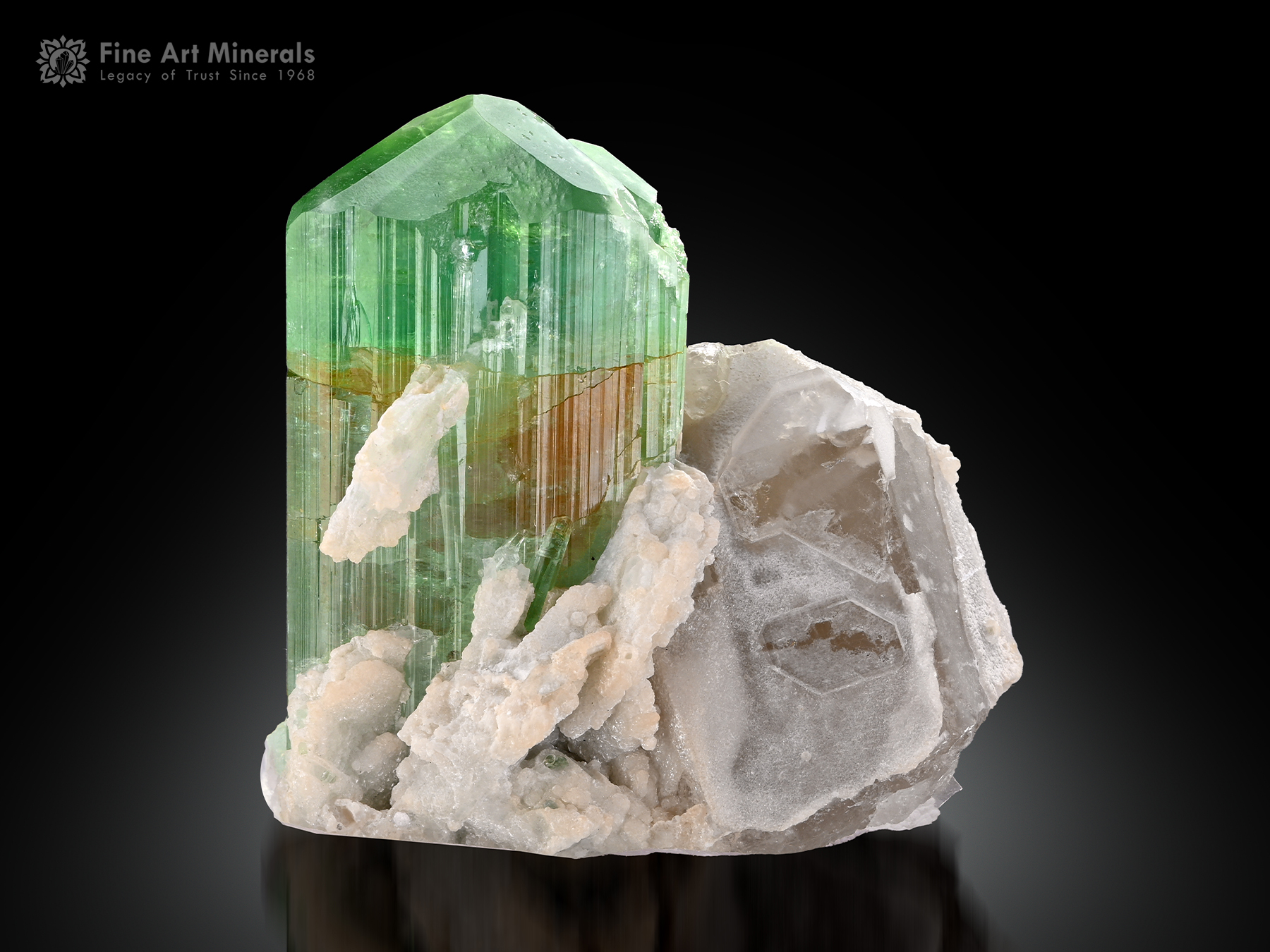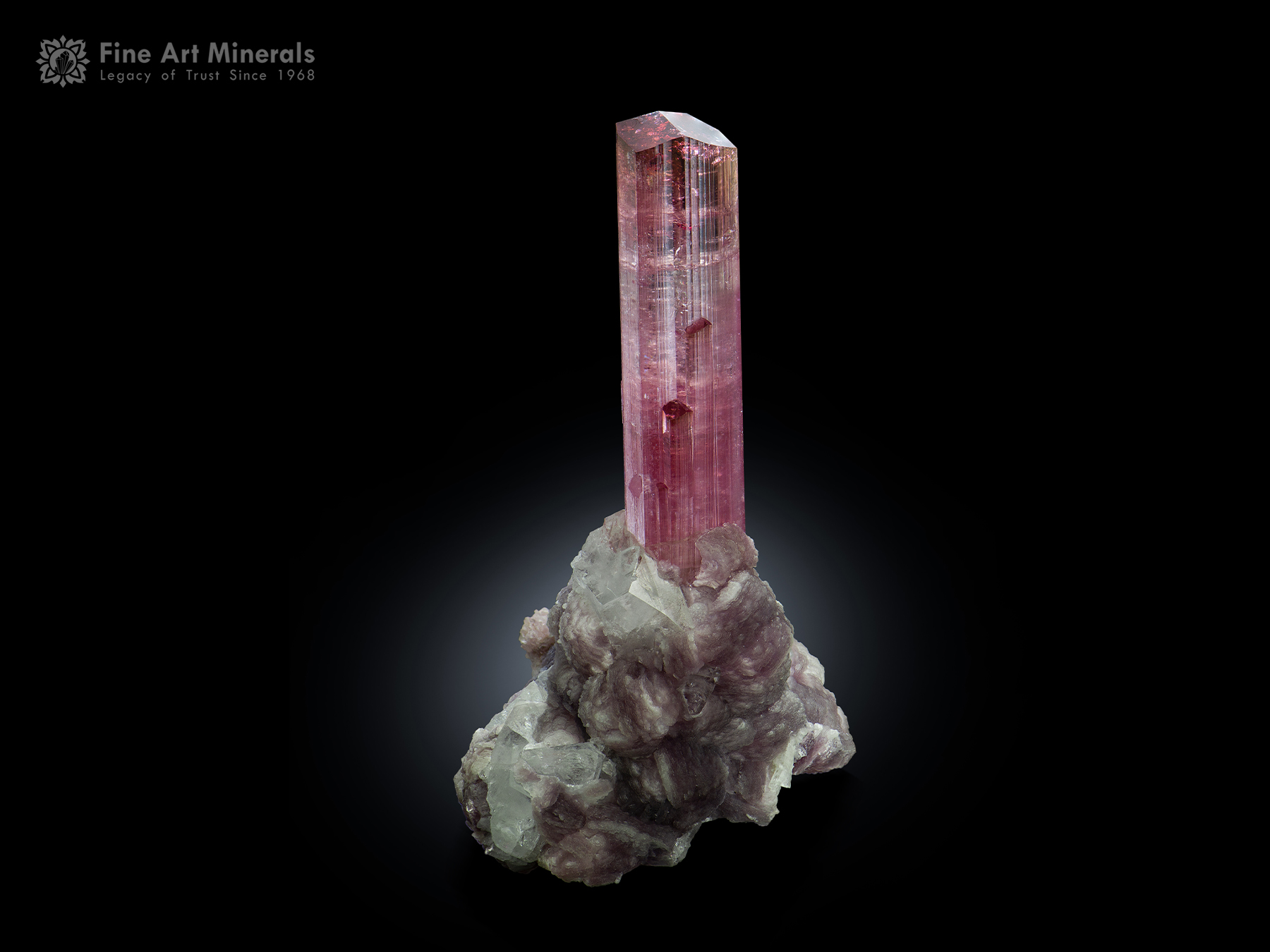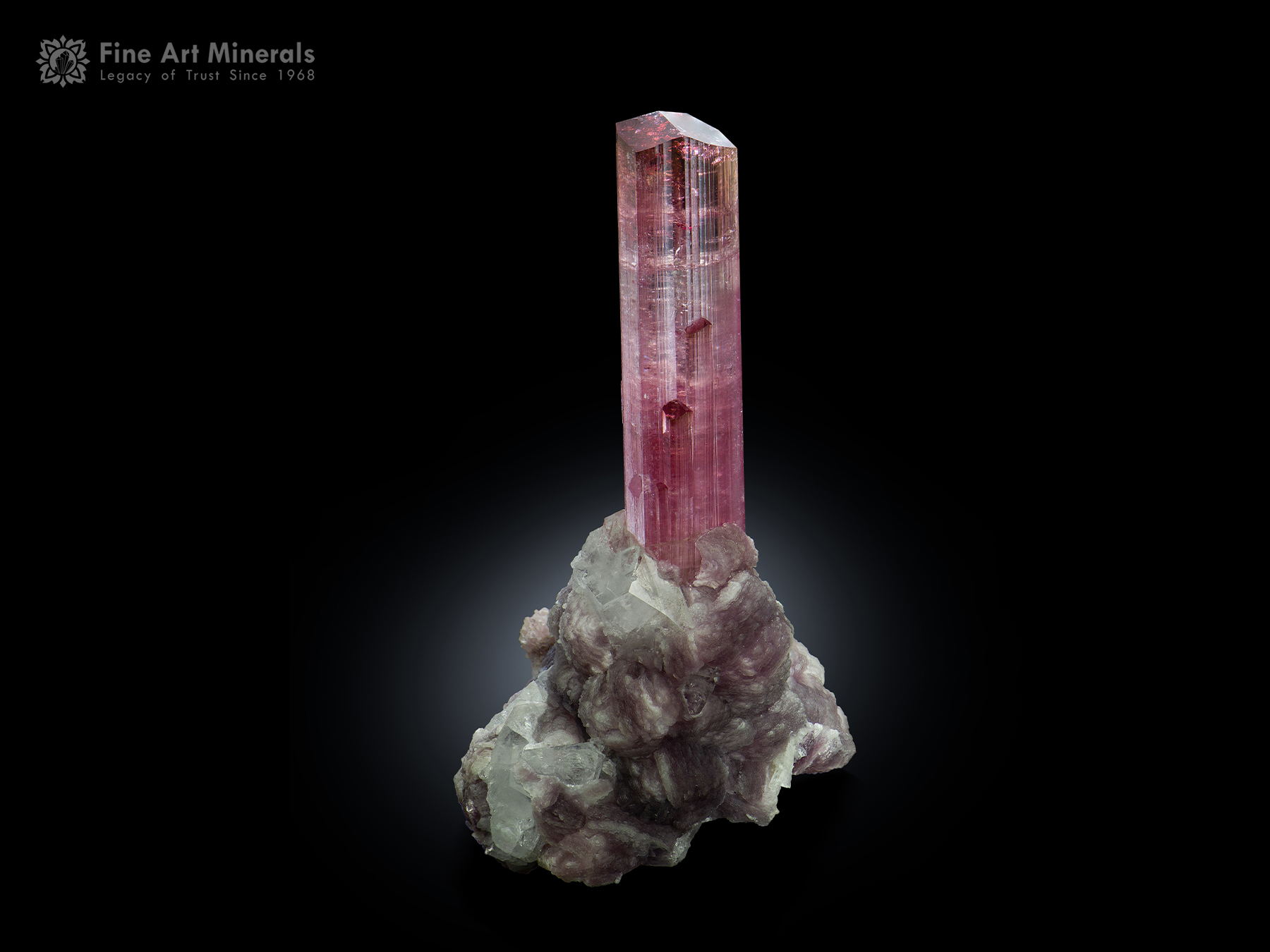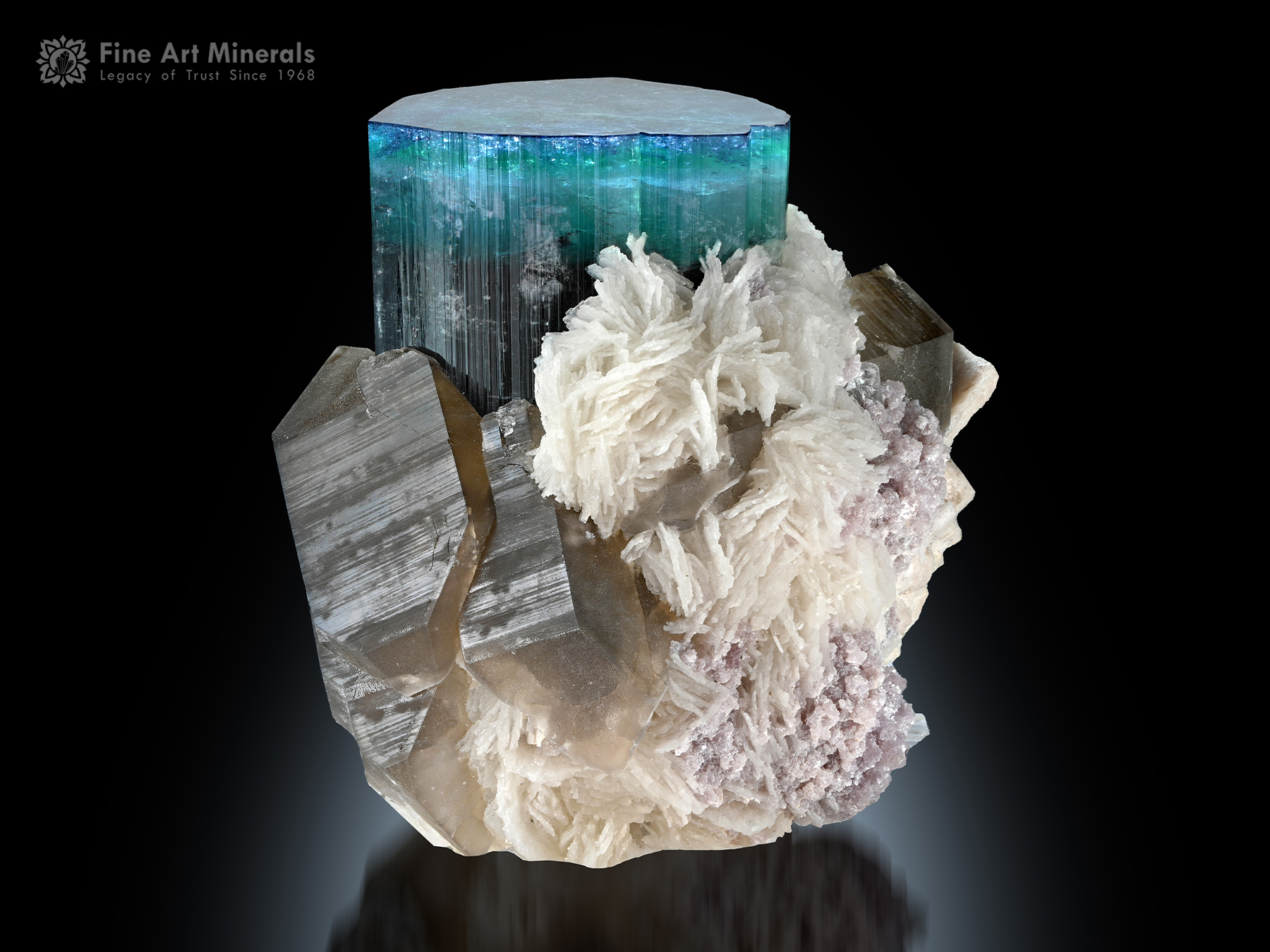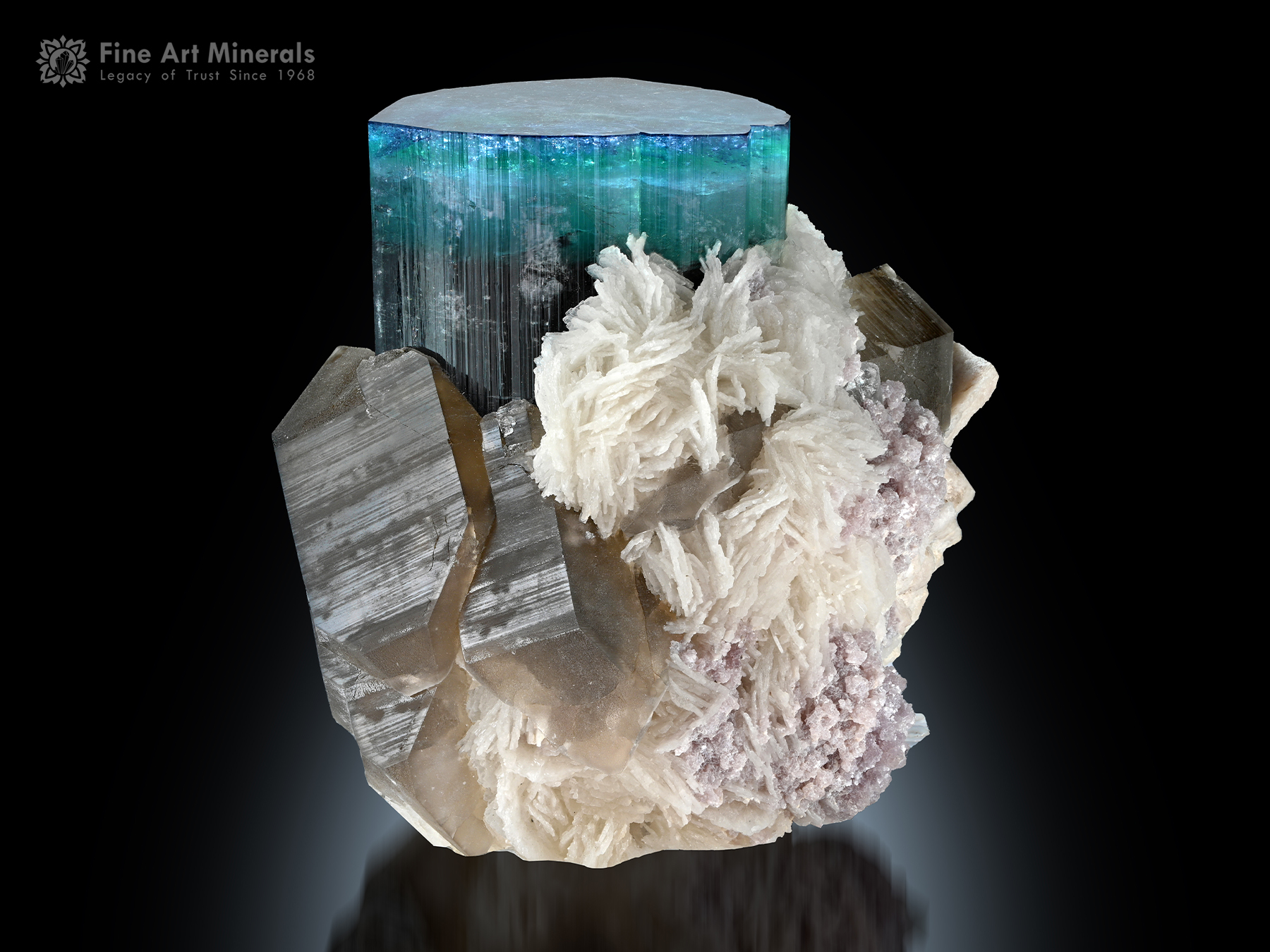Welcome to the vibrant and fascinating world of Tourmaline, a captivating mineral known for its kaleidoscopic variety of colors, is a treasure trove of natural beauty.
Ranging from beautiful shades of red, pink, green, blue, and more, this crystalline boron silicate mineral offers a spectrum of colors akin to a painter’s palette.
What makes tourmaline truly enchanting is its remarkable diversity, creating a family with an array of individual characters.
From the deep red allure of rubellite to the cool, tranquil blues of indicolite, the tourmaline family presents a beautiful tapestry of colors and characteristics.
Each variety, whether it’s the earthy tones of dravite or the vibrant neon-like hues of Paraiba, possesses its own unique charm, making every tourmaline a distinct work of natural art.
The transparency, brilliance, and multifaceted nature of these minerals contribute to their desirability in the world of jewelry and beyond.
Join us on a journey through the facets of this captivating mineral kingdom as we explore the different varieties, uncover their distinct features, and delve into the allure of tourmaline minerals.
Table of Contents
ToggleExploring the World of Tourmaline Varieties
All of the Tourmaline varieties are given below:
1. Rubellite Tourmaline
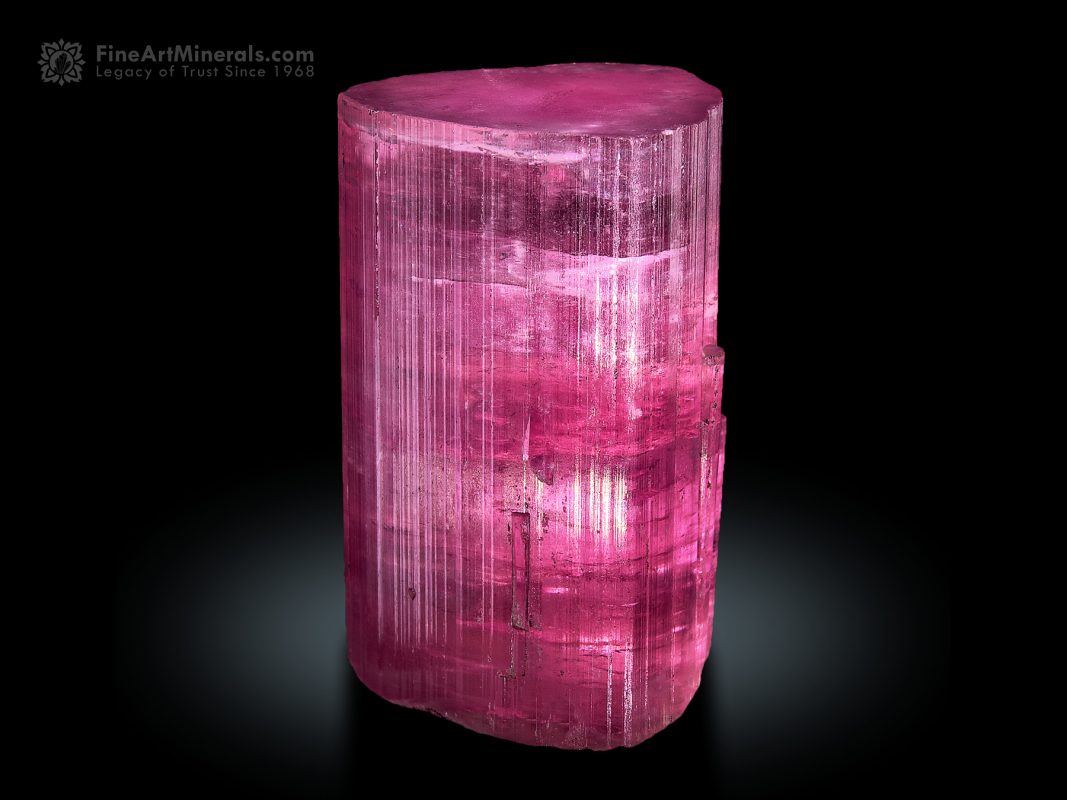

Rubellite Tourmaline, a beloved member of the tourmaline family, stands out with its captivating red to pinkish-red hues, owed to the presence of manganese traces.
Highly sought after for its intense color, this variety of tourmaline mesmerizes with its deep and vibrant tones that span from shades of gentle pink to rich red, often displaying excellent transparency.
When found in nature, rubellite typically forms in elongated crystals, emphasizing exceptional clarity and brilliance that catch the light in a remarkable way.
This alluring mineral is sourced from various locations worldwide, with significant deposits found in Brazil, Nigeria, Madagascar, and Afghanistan, among other regions.
The rich and diverse geological landscapes of these areas provide the perfect environment for the formation of these captivating rubellite crystals.
What makes this variety particularly fascinating is its striking resemblance to the exquisite color of rubies, which led to the name “rubellite.” This uncanny similarity to the renowned gemstone adds to the allure and desirability of the rubellite tourmaline.
The rubellite tourmaline’s vibrant and radiant character not only captivates gemstone enthusiasts but also holds a significant place in the realm of jewelry, owing to its rich color and gem-quality features that make it a perfect choice for creating stunning and eye-catching pieces.
2. Indicolite Tourmaline
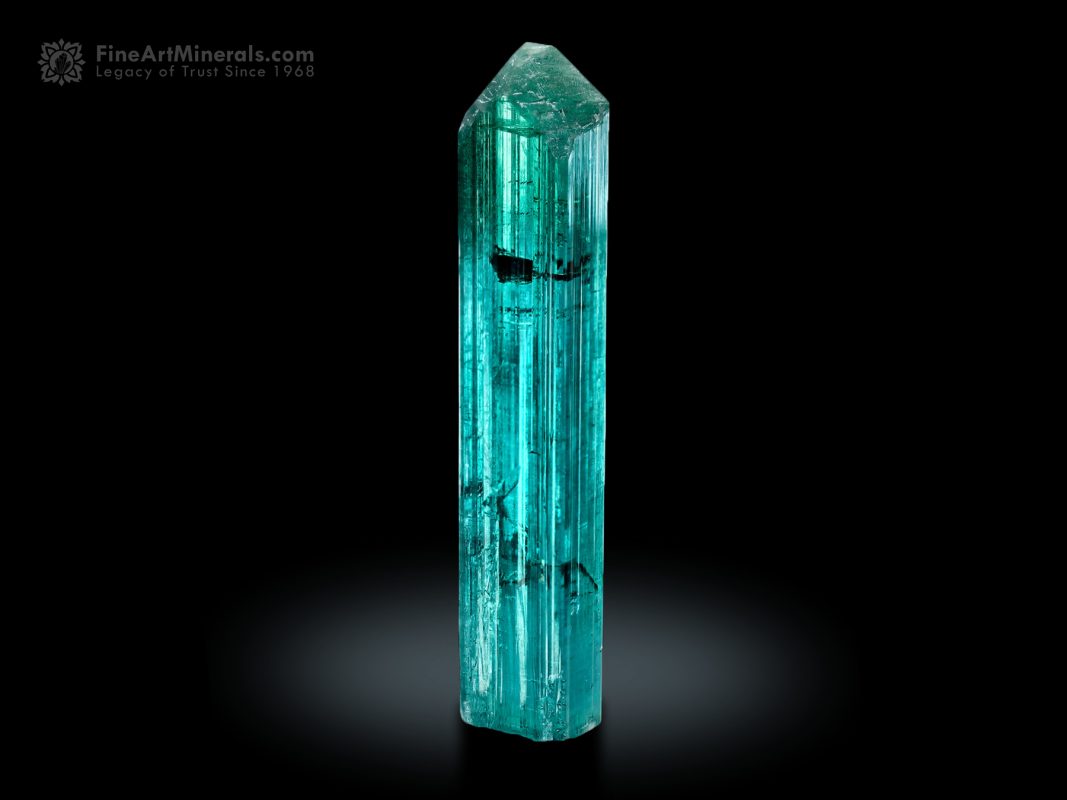

Indicolite Tourmaline, a mesmerizing variety within the tourmaline family, showcases an array of serene blue hues.
This particular tourmaline is known for its varying shades of blue, ranging from the soft, calming tones of light sky blue to the rich, deep blues reminiscent of the ocean depths.
The distinguishing feature of indicolite is its captivating blue coloration. Ranging in hues from light to dark, this tourmaline exhibits a tranquil and soothing palette of blues.
Often prized for its color purity and depth, indicolite stands out for its serene and cool tones, captivating those who admire its calming shades.
Typically forming in prismatic crystals, indicolite displays a vitreous luster, emphasizing its natural beauty.
Its crystal structure often showcases elongated formations, allowing light to interact and reflect within the gem, enhancing its appeal.
One of the most notable aspects of indicolite is the spectrum of blues it presents. From pale and delicate to intense and deep, the variety of shades within indicolite tourmaline sets it apart as a mineral of tranquil beauty.
Indicolite is sourced from various locations worldwide, including Brazil, Afghanistan, and Madagascar. These diverse geological regions offer the perfect conditions for the creation of these captivating blue tourmalines, making them available to jewelry artisans and gemstone enthusiasts globally.
Indicolite’s serene and captivating blue hues make it an exceptional addition to the world of minerals and gemstones, admired for its calming beauty and unique shade variations.
3. Verdelite Tourmaline
Verdelite, a fascinating member of the tourmaline family, displays a captivating array of green hues. This variety of tourmaline is admired for its diverse spectrum of green shades, ranging from delicate pale greens to rich and deep emerald tones.
Its lush and verdant colors make it a coveted choice for gemstone enthusiasts and jewelry artisans alike.
Known for its remarkable range of green hues, Verdelite tourmaline embodies a natural beauty that enchants admirers.
The colors span from light, almost ethereal greens to intense and rich green shades, offering a visual treat for those captivated by nature’s greens.
This tourmaline typically forms in elongated crystals that exhibit a glassy luster, showcasing excellent transparency and allowing the mineral to sparkle and shimmer when exposed to light.
The crystal structure of verdelite enhances its beauty, presenting a stunning display of nature’s artistry.
A notable feature of verdelite is the depth and variety of green hues it presents.
Its ability to offer a broad range of green shades within a single gemstone distinguishes it as a fascinating and sought-after variety within the tourmaline family.
Verdelite is sourced from various locations worldwide, including Brazil, Afghanistan, and Nigeria, among other regions.
These diverse geological landscapes provide the ideal conditions for the formation of these captivating green tourmalines, making them accessible to jewelry creators and gemstone enthusiasts around the world.
Verdelite’s alluring greens make it a beloved addition to the world of minerals and gemstones, cherished for its diversity of shades and natural beauty that reflects the marvels of the Earth’s color palette.
4. Bi-Color and Multi-Color Tourmaline
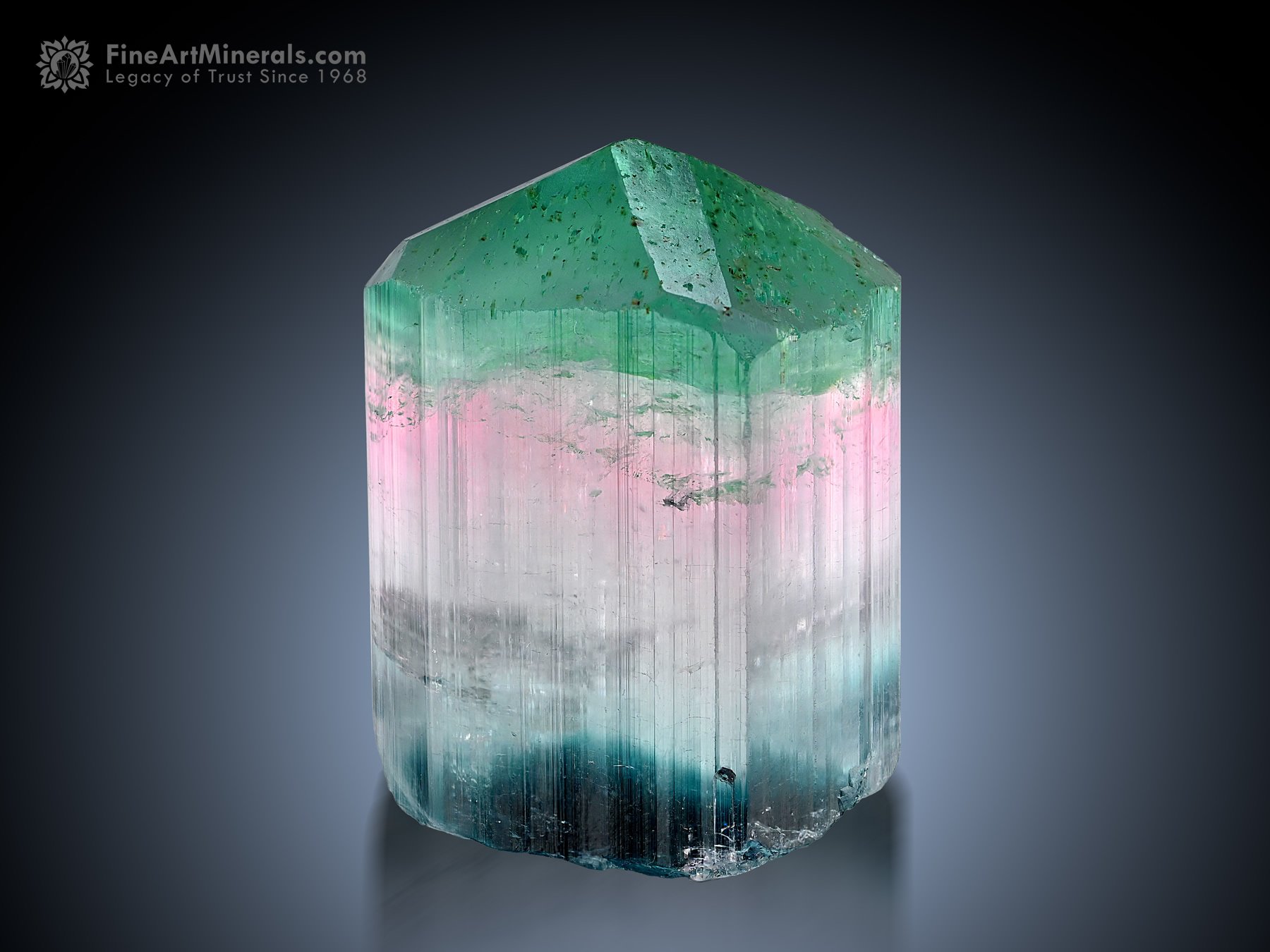

Bi-Color and Multi-Color Tourmaline are captivating varieties renowned for their kaleidoscopic beauty, exhibiting more than one color within a single mineral.
These stones present a stunning visual display, often showcasing a mix of two or more distinct colors in a single crystal, creating patterns or zones that define their unique appeal.
Characterized by their varied color zoning, these tourmalines create a delightful fusion of colors, transitioning seamlessly within a single gem.
The shades range from combinations like pink and green, red and blue, or any other striking mix, forming natural works of art within the mineral.
The crystal structure of these tourmalines varies, displaying elongated formations that emphasize the color transitions.
The transition zones often create mesmerizing patterns, showcasing the boundaries between different hues within the same crystal.
One of the most notable features of these tourmalines is the distinct and captivating color boundaries. The seamless blending of different hues within one stone distinguishes these gems, offering a visual feast for gem enthusiasts and collectors.
Bi-Color and Multi-Color Tourmalines are found in various locations worldwide, including Brazil, Madagascar, and Afghanistan.
These diverse geological environments contribute to the creation of these unique gems, providing a canvas for nature’s artistic expressions within a single stone.
The enchanting beauty of these multi-hued tourmalines, displaying a convergence of colors within one gem, reflects the beauty and wonder of nature’s artistry, making them a sought-after and delightful addition to the world of gemstones.
5. Watermelon Tourmaline
Watermelon Tourmaline, a delightful variety in the world of minerals and gemstones, is renowned for its striking resemblance to the cross-section of a watermelon.
This particular tourmaline exhibits a distinctive visual appearance, with a pink center encircled by an outer green rim, echoing the colors of the beloved summertime fruit.
Characterized by its captivating resemblance to a watermelon, this tourmaline variety features a pink core, transitioning seamlessly into an outer green layer, creating a stunning and natural watermelon-like appearance.
The visual allure of this mineral lies in its ability to mimic the color arrangement found in the iconic fruit.
Watermelon tourmaline often forms in elongated crystal structures, presenting concentric rings of color within the stone.
This unique crystal formation showcases the concentric patterns, adding to the stone’s distinct and appealing visual identity.
The most notable feature of Watermelon Tourmaline is its striking resemblance to the colors of a watermelon.
The seamless blending of pink and green within one mineral sets it apart, offering a visual delight for minerals, and gemstone enthusiasts, and collectors.
This variety of tourmaline is found in various locations, including Brazil, Nigeria, and Madagascar. The geological diversity of these regions provides the necessary conditions for the creation of these captivating gems, making them available to mineral and gemstone admirers globally.
Watermelon Tourmaline’s natural resemblance to a slice of the beloved fruit adds to its charm and desirability, making it a unique and sought-after addition to the world of mineral and gemstones, appreciated for its natural artistry within each stone.
6. Chrome Tourmaline
Chrome Tourmaline is a radiant variety within the tourmaline family, celebrated for its vibrant green coloration, owing to the presence of chromium.
This particular tourmaline boasts a rich and intense green hue, offering a striking and vivid color seldom seen in other minerals.
Characterized by its lively green color, chrome tourmaline showcases a brilliant and lively green that captivates onlookers.
The presence of chromium imparts a vibrant green that sets it apart from other green minerals, making it a remarkable addition to the world of colored gems.
Chrome tourmaline typically forms in elongated prismatic crystals with a vitreous luster, enhancing its transparency and brilliance.
The crystal structure highlights the gem’s natural beauty, allowing light to interact and reflect within the stone, emphasizing its vivid green shade.
The most notable feature of Chrome Tourmaline is its vibrant green color attributed to the presence of chromium.
This intense and radiant hue differentiates it from other green minerals, making it a coveted choice for those seeking a lively and striking green in their jewelry.
Chrome Tourmaline is sourced from various locations, including Tanzania, Madagascar, and Kenya. These diverse geological environments foster the creation of these radiant green minerals, making them accessible to mineral and gemstone enthusiasts and jewelry creators worldwide.
The captivating and radiant green of Chrome Tourmaline offers a unique and vibrant addition to the world of minerals and gemstones, admired for its lively color and natural beauty that illuminates any jewelry piece it graces.
7. Paraiba Tourmaline
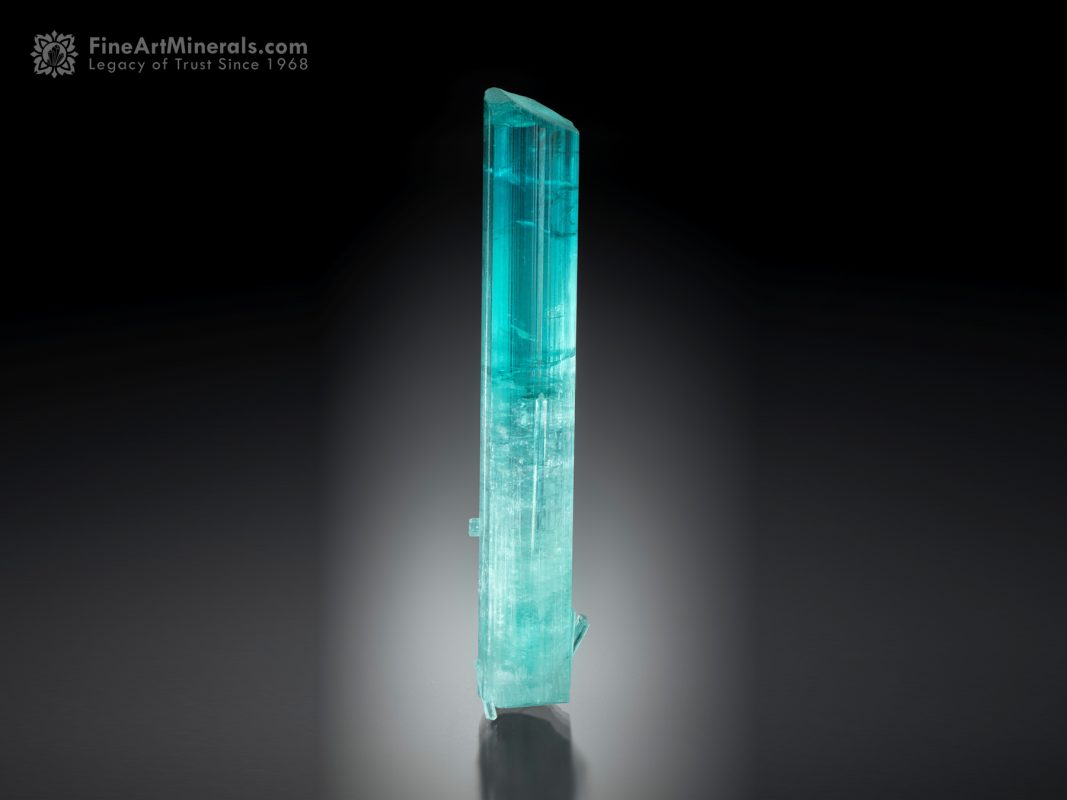

Paraiba Tourmaline, a rare and prized variety within the tourmaline family, is renowned for its vibrant and striking neon-like blue-to-green hues, attributed to the presence of copper.
This exceptional mineral is celebrated for its electric and vivid colors that set it apart as a highly coveted and valuable gem.
Characterized by its captivating neon-like blues and greens, Paraiba tourmaline showcases an extraordinary and intense color palette seldom seen in other minerals and gemstones.
The presence of copper infuses this tourmaline with a vibrant and almost glowing hue that mesmerizes onlookers.
Paraiba tourmaline typically forms in elongated crystals, displaying remarkable color intensity and transparency.
The crystal structure accentuates the gem’s vivid and electric shades, allowing light to interact and emphasize its exceptional coloring.
The most notable feature of Paraiba Tourmaline is its remarkable and almost luminescent blue to green color attributed to the presence of copper.
This unique and vivid coloration distinguishes it as one of the most sought-after and valuable minerals in the world of colored gems.
Paraiba Tourmaline is primarily sourced from Brazil and Mozambique. These specific regions provide the ideal conditions for the creation of this extraordinary mineral, making them rare and highly desired by gemstone enthusiasts and collectors worldwide.
The mesmerizing and radiant colors of Paraiba Tourmaline offer a unique and exceptional addition to the world of gemstones, cherished for its extraordinary electric hues and natural beauty that elevate any jewelry piece it graces.
8. Dravite Tourmaline
Dravite Tourmaline, a distinctive variety in the tourmaline family, is recognized for its predominantly brown coloration, occasionally with hints of yellow or green tones.
This particular tourmaline showcases earthy and warm hues, making it stand out among its mineral counterparts.
Characterized by its earthy tones, Dravite often displays shades ranging from brown with hints of yellow to darker brown with a touch of green.
Its predominantly brown colors create a mineral that is highly regarded for its natural and earth-inspired beauty.
Dravite typically forms in prismatic crystals with a resinous to vitreous luster, emphasizing its natural elegance.
The crystal structure highlights the interplay of its earthy tones, displaying patterns and hues that reflect the beauty of nature.
A notable feature of Dravite Tourmaline is its natural and earthy color palette.
Its predominantly brown tones, occasionally with hints of yellow or green, set it apart, offering a warm and elegant choice within the spectrum of tourmaline minerals.
Dravite is sourced from various locations worldwide, including Sri Lanka, Brazil, and Australia.
The diverse geological conditions in these areas provide the ideal environment for the formation of these captivating brown and earth-toned tourmalines, making them accessible to mineral and gemstone enthusiasts and jewelry creators globally.
Dravite Tourmaline’s warm and earth-inspired tones present a unique and elegant addition to the world of minerals and gemstones.
Admired for its natural beauty and warm hues, Dravite reflects the splendor and richness of the Earth’s palette within each stone.
9. Schorl Tourmaline
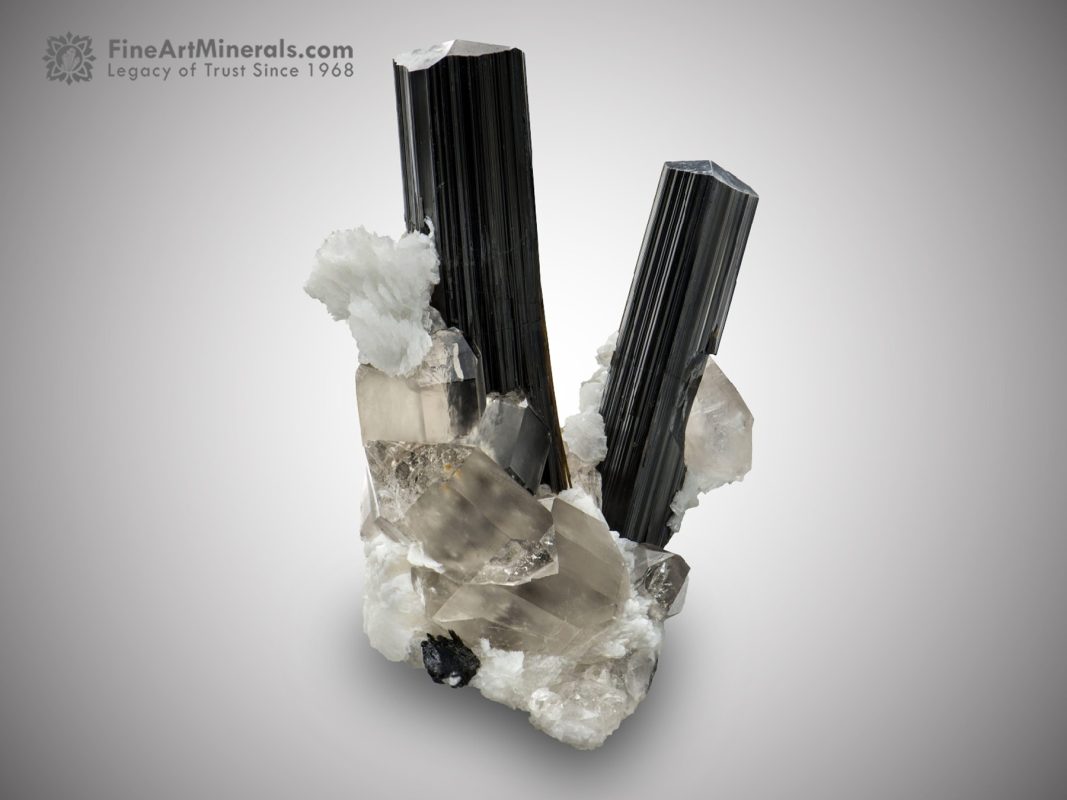

Schorl Tourmaline, a prevalent and timeless member of the tourmaline family, is distinguished by its predominantly black color, occasionally with undertones of bluish or brownish hues.
This particular variety presents a mineral celebrated for its dark and opaque appearance, setting it apart from its colorful counterparts within the tourmaline family.
Characterized by its deep black color, Schorl often showcases shades of black with subtle hints of bluish or brownish undertones.
Its prevalent blackness offers a classic and enduring choice for those seeking the elegance of black minerals.
Schorl typically forms in prismatic crystals and presents a vitreous to resinous luster, emphasizing its opaque and dark nature.
The crystal structure highlights the gem’s inherent depth, displaying an opaque richness that is distinctive to Schorl.
One of the most notable features of Schorl Tourmaline is its deep black coloration, setting it apart from its more colorful tourmaline counterparts.
Its predominantly dark and opaque appearance distinguishes it, offering a classic and enduring choice in the world of minerals and gemstones.
Schorl Tourmaline is found in various locations worldwide, including Pakistan, Brazil, Madagascar, and the United States.
These diverse geological landscapes provide the ideal conditions for the creation of these enduring and timeless black minerals, making them accessible to mineral and gemstone enthusiasts and jewelry creators across the globe.
Schorl’s deep and timeless black appearance offers a classic and enduring addition to the world of minerals and gemstones, admired for its dark beauty and elegance that adds a sophisticated touch to any jewelry piece it adorns.
10. Elbaite Tourmaline
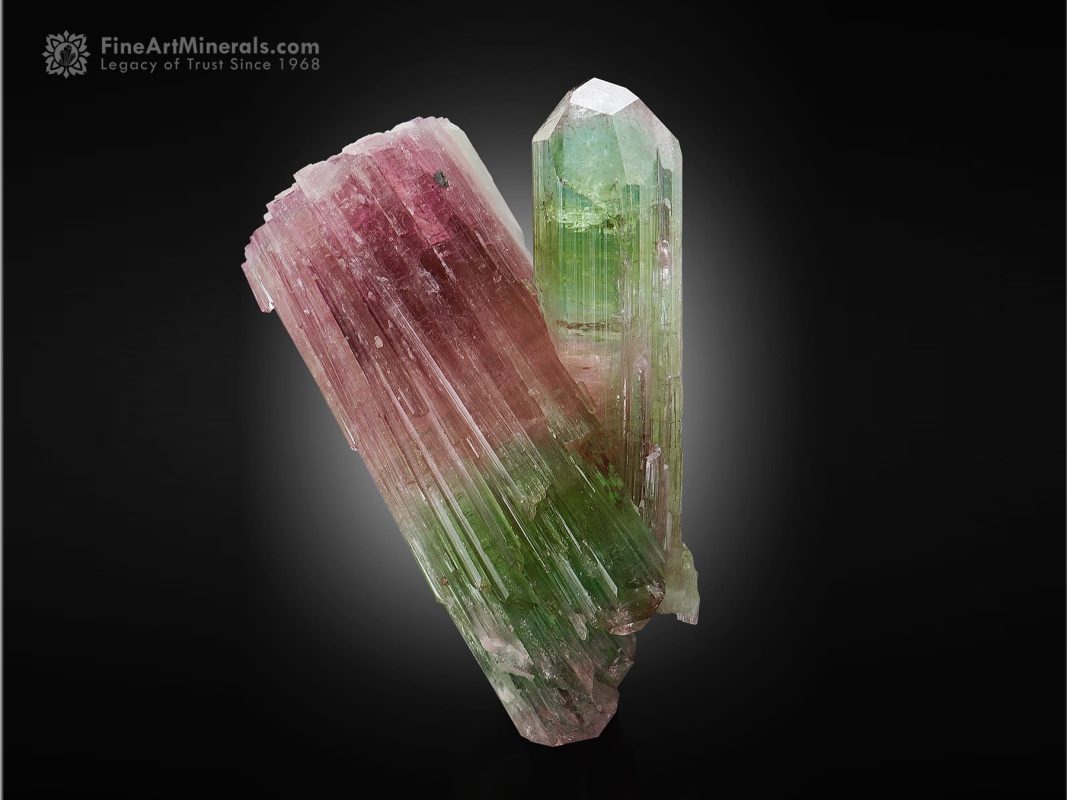

Elbaite Tourmaline, a diverse and captivating subgroup within the tourmaline family, is known for its wide range of colors, making it one of the most sought-after and valuable.
This variety presents an array of vibrant hues, including pink, green, blue, yellow, and even colorless stones, offering a colorful palette akin to a painter’s canvas.
Characterized by its diverse spectrum of colors, Elbaite showcases a kaleidoscope of shades, ranging from delicate pastels to deep, vivid colors.
Its versatility in coloration makes it highly desirable for its capacity to offer a vast range of mineral and gemstone hues.
Elbaite typically forms in elongated crystals, often with exceptional clarity and brilliance, emphasizing its vivid and varied colors.
The crystal structure allows light to interact within the gem, showcasing its multiple colors with vibrancy and brightness.
One of the most notable features of Elbaite Tourmaline is its wide range of colors, setting it apart as one of the most diverse minerals within the tourmaline family.
Its ability to offer a vast array of colors in a single variety makes it highly coveted among mineral, and gemstone enthusiasts, and collectors.
Elbaite Tourmaline is sourced from various locations worldwide, including Brazil, Afghanistan, and Madagascar. The geological diversity of these regions provides the perfect conditions for the creation of this captivating and versatile mineral, offering a spectrum of colors to those who admire it.
The captivating and diverse range of colors found in Elbaite Tourmaline makes it an exceptional and versatile addition to the world of minerals and gemstones.
Admired for its vibrant hues and diverse palette, Elbaite showcases nature’s capacity to paint a vibrant spectrum within a single mineral.
11. Liddicoatite Tourmaline
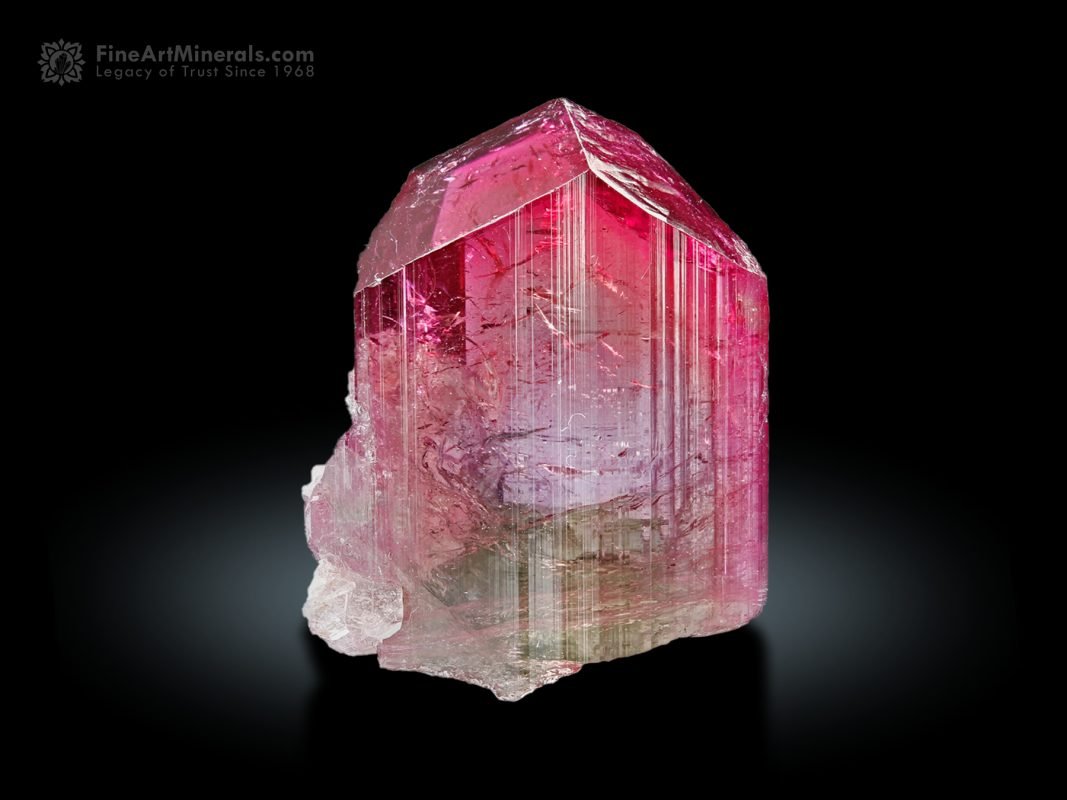

Liddicoatite Tourmaline, a rare, calcium-rich lithium tourmaline and intricate form within the tourmaline family, is appreciated for its unique crystal formations and distinct color zoning.
This variety of tourmaline is characterized by its complex structure, showcasing multiple colors in distinct zones along the crystal’s length, creating a visual tapestry within a single stone.
Known for its complex color zoning, Liddicoatite exhibits multiple colors arranged in unique patterns along the crystal’s length.
These distinct color zones create a captivating and visually appealing gem, celebrated for its patterns and the diversity of hues it presents.
Liddicoatite typically showcases a more complex crystal structure compared to other tourmaline varieties, displaying multiple terminations and various colors within a single crystal.
This complexity enhances the gem’s allure, offering an extraordinary visual treat for admirers.
The most notable feature of Liddicoatite Tourmaline is its intricate crystal structure and multiple colors within a single gemstone.
This distinct feature sets it apart, making it a highly desired and rare variety among mineral and gemstone enthusiasts and collectors.
Liddicoatite is sourced from various locations worldwide, including Madagascar and Sri Lanka.
These geological environments provide the necessary conditions for the formation of this intricate and uniquely patterned mineral, offering a distinctive and rare addition to the world of minerals and gemstones.
Liddicoatite Tourmaline’s intricate crystal formations and unique color zoning present a rare and fascinating addition to the mineral and gemstone world.
Admired for its complex and visually captivating patterns, Liddicoatite exemplifies nature’s artistic expressions within each stone.
Uses of Tourmaline
Several varieties of tourmaline are highly coveted by collectors and enthusiasts because of their exceptional colors and rare occurrences.
These unique and vibrant minerals are treasured not only for their beauty but also for their scarcity in nature.
Certain varieties, such as Paraiba tourmalines, are particularly sought after for their vivid and rare colorations, making them prized possessions for mineral and gemstone collectors and connoisseurs.
Their scarcity and unique hues contribute to their high value and desirability within the world of minerals and gemstones.
Gem enthusiasts and collectors eagerly pursue these varieties due to their distinctive and exceptional qualities, adding a touch of rarity and beauty to their collections.
Conclusion
The world of tourmaline minerals is a mesmerizing tapestry of color and rarity. With its diverse range of varieties, each boasting unique hues and characteristics, tourmaline captivates gem enthusiasts and collectors worldwide.
The significance of tourmaline in the mineral and gemstone market lies in its allure—varieties like Paraiba and rubellite, cherished for their exceptional and vibrant colors, command high value due to their rarity.
These minerals hold an enduring fascination, sought after for their beauty and scarcity. Their colors, crystal structures, and rarity contribute to their allure, making them prized possessions for collectors and connoisseurs.
As the rarity of certain tourmaline varieties continues to increase, so does their value in the gemstone market, emphasizing their lasting appeal and investment potential.
The ever-evolving demand for these enchanting minerals highlights their timeless and enduring fascination.
Tourmaline remains an essential and captivating element in the world of minerals and gemstones, offering a spectrum of colors, rarity, and allure that continues to enthrall collectors and gem enthusiasts alike.
So, this is the complete information about Exploring the World of Tourmaline Varieties, If you have any kind of suggestions or questions, feel free to ask in the comment section below.
OR
You can also Contact Us if you want any kind of Minerals or Gemstones.
Thanks for Reading.

